
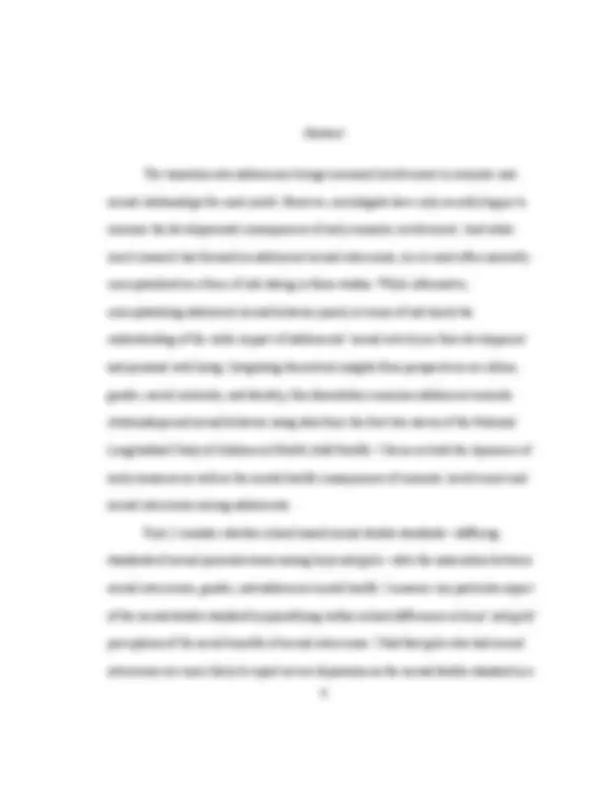
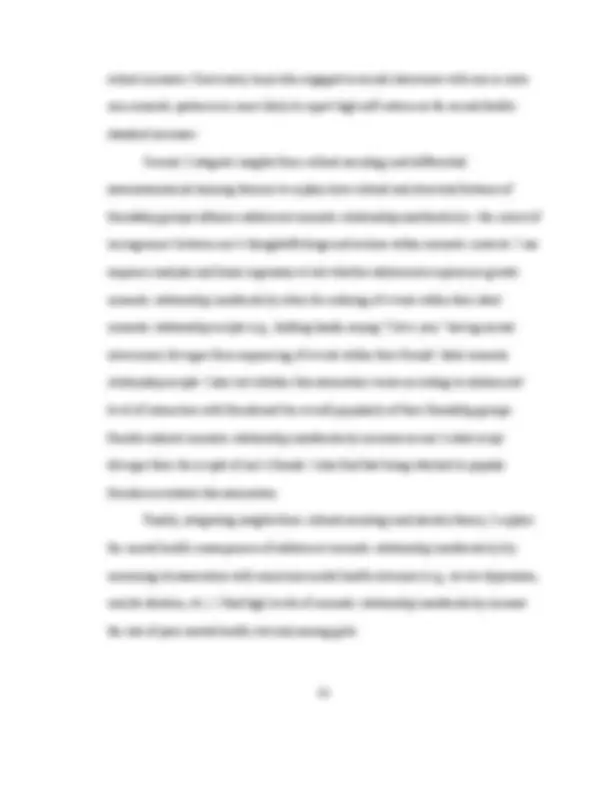
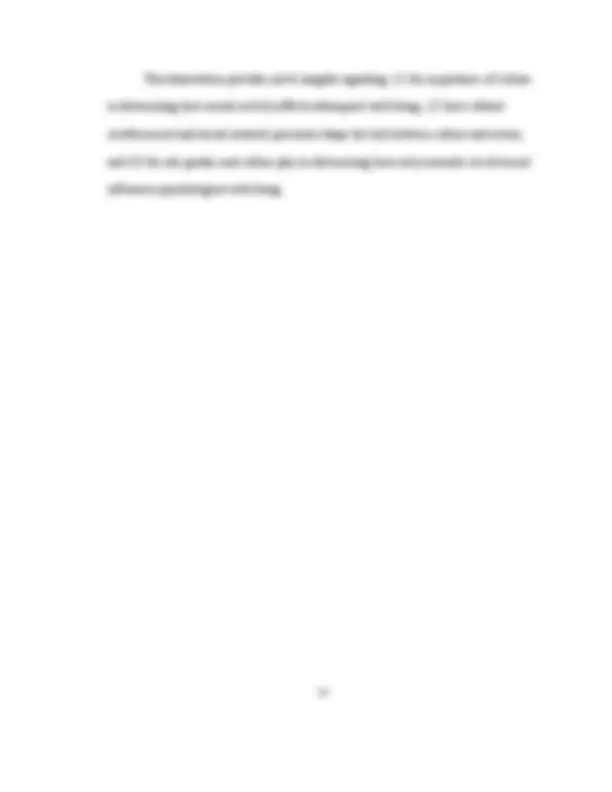

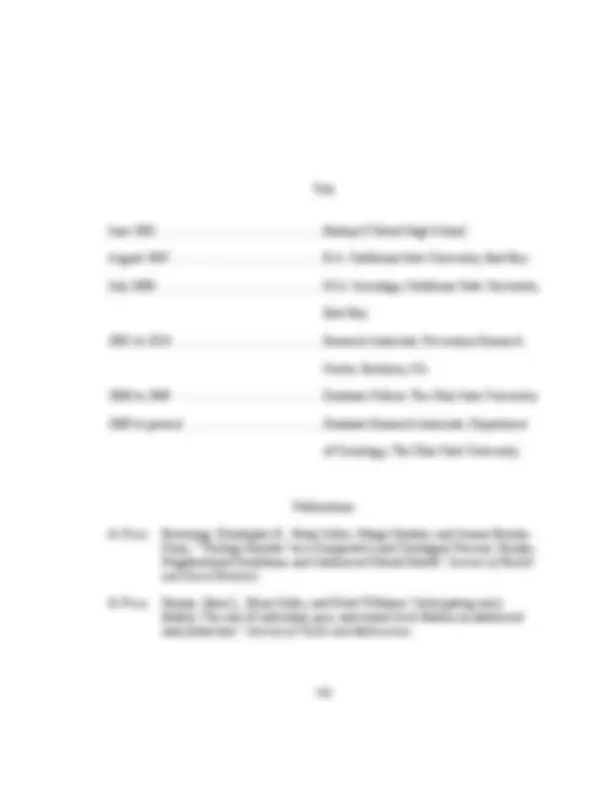
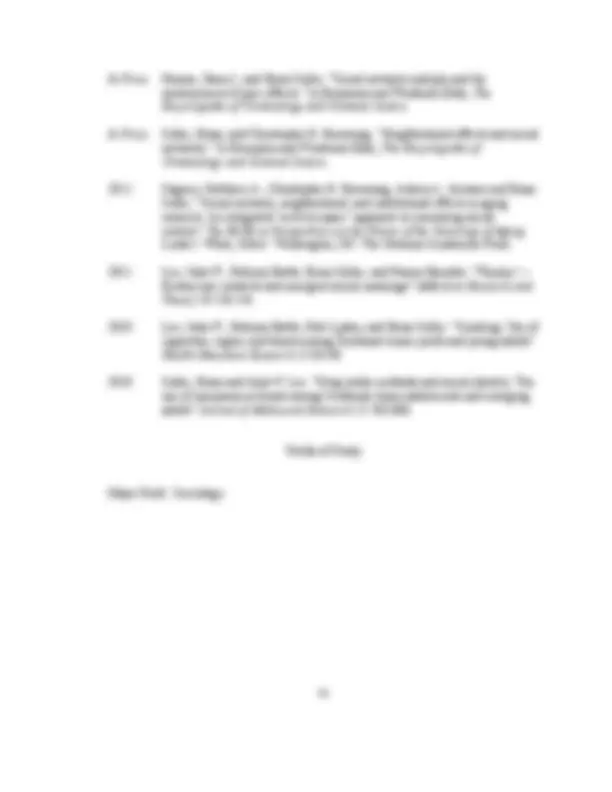
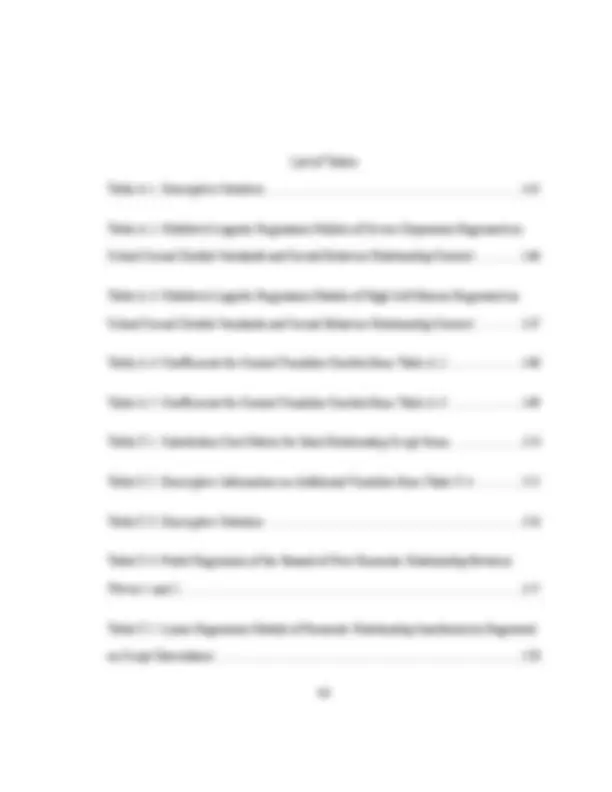


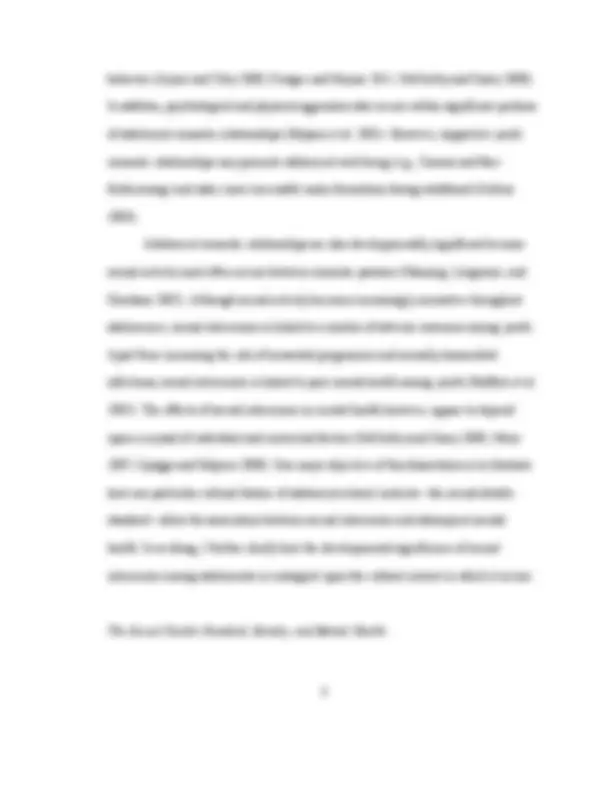
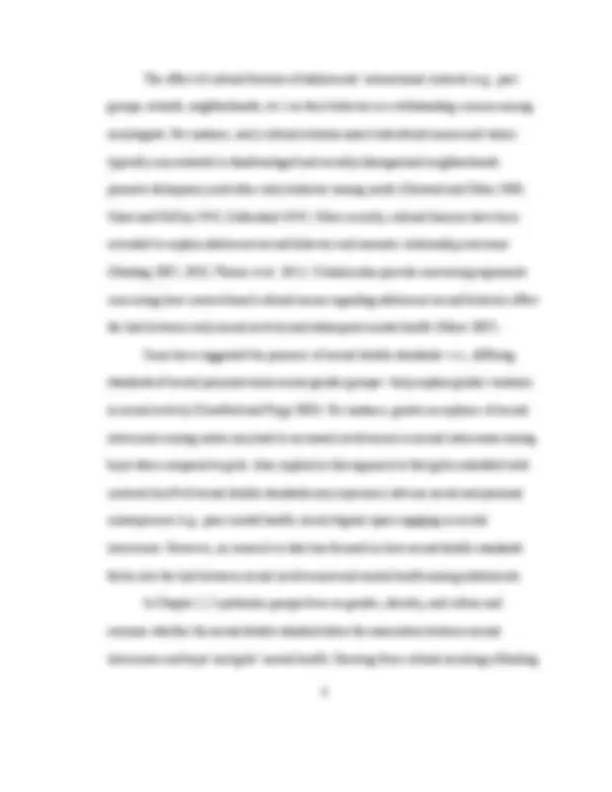
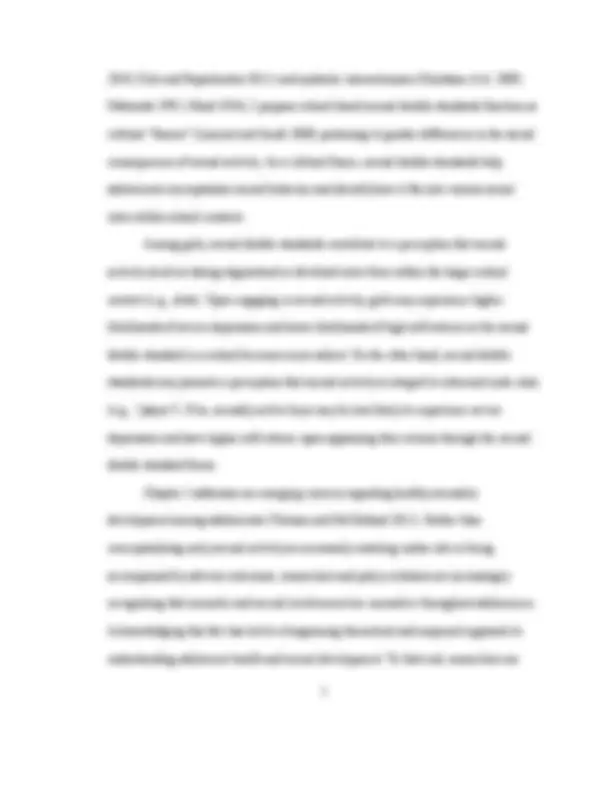
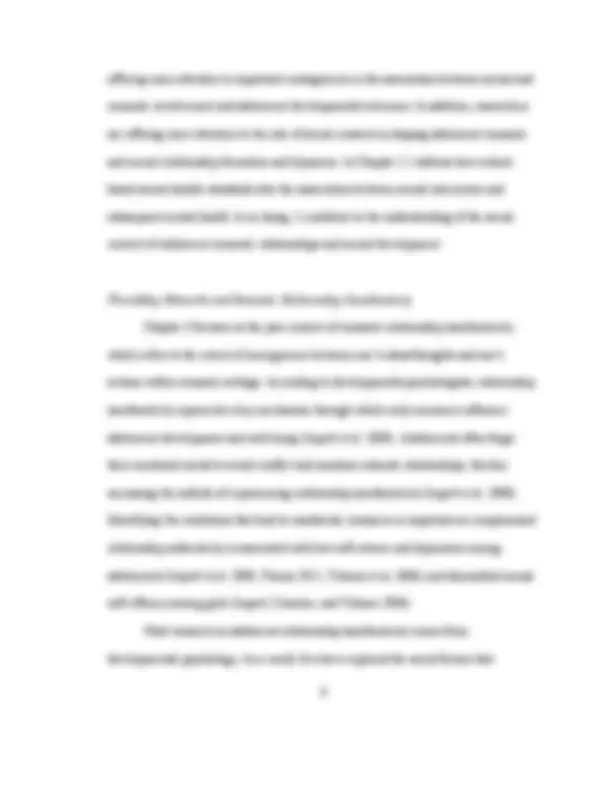
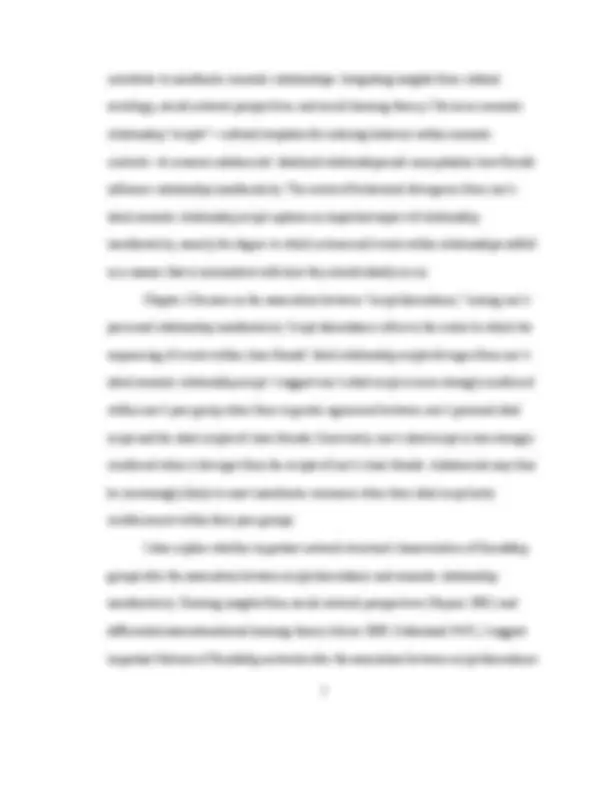
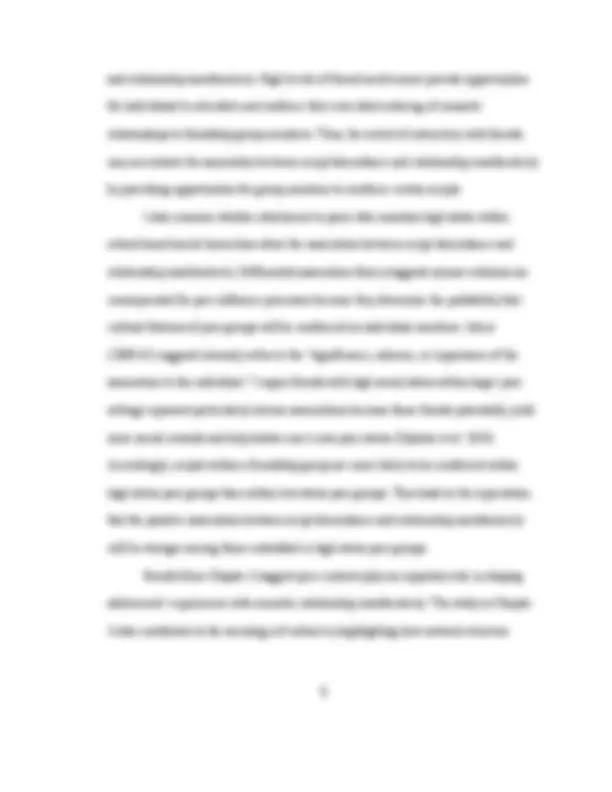
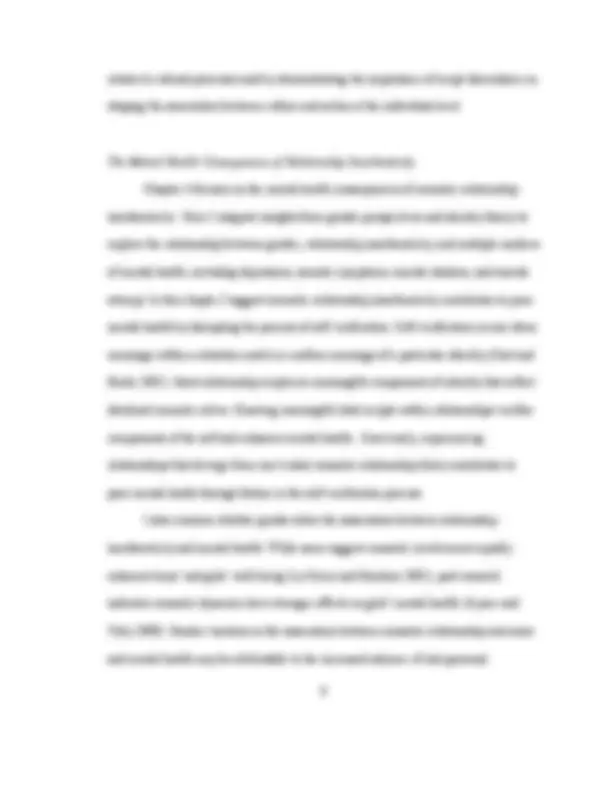
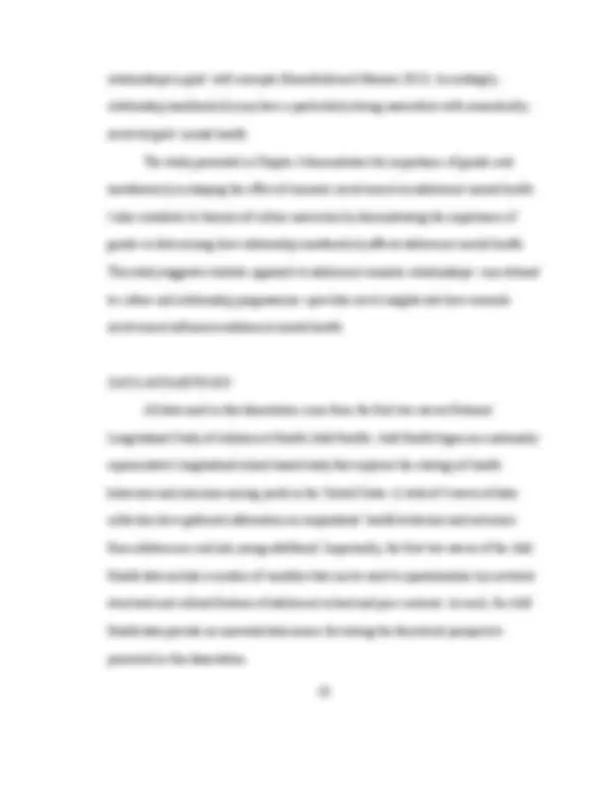
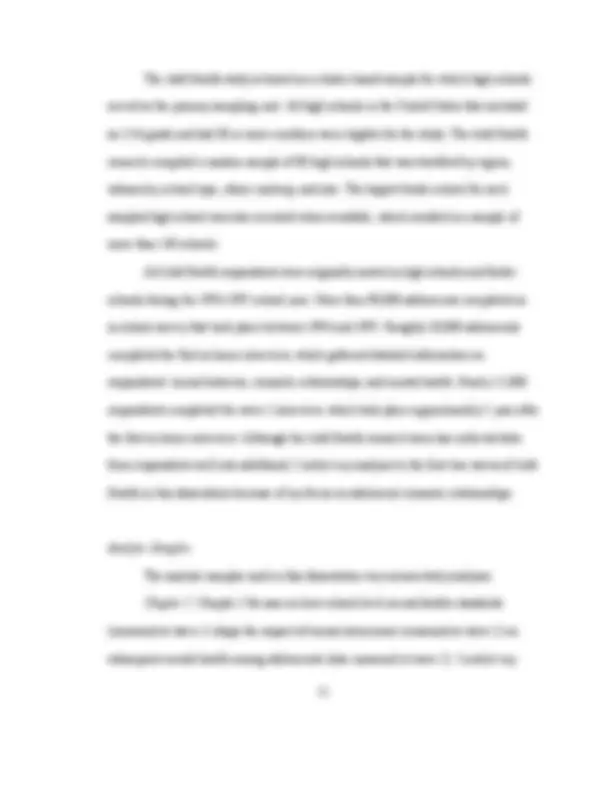
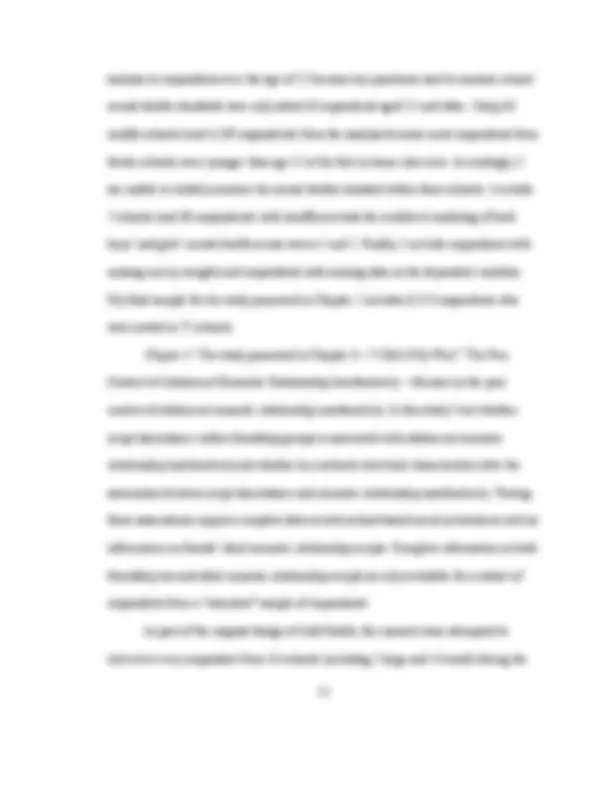
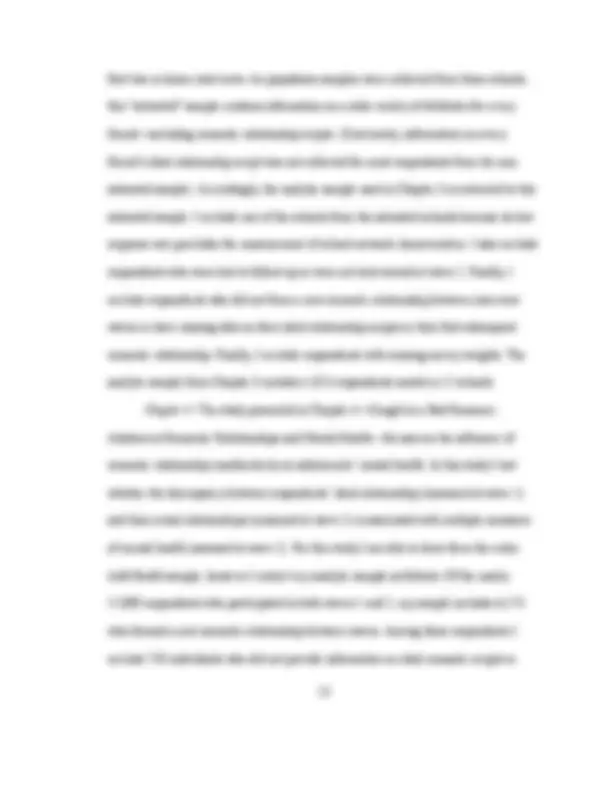

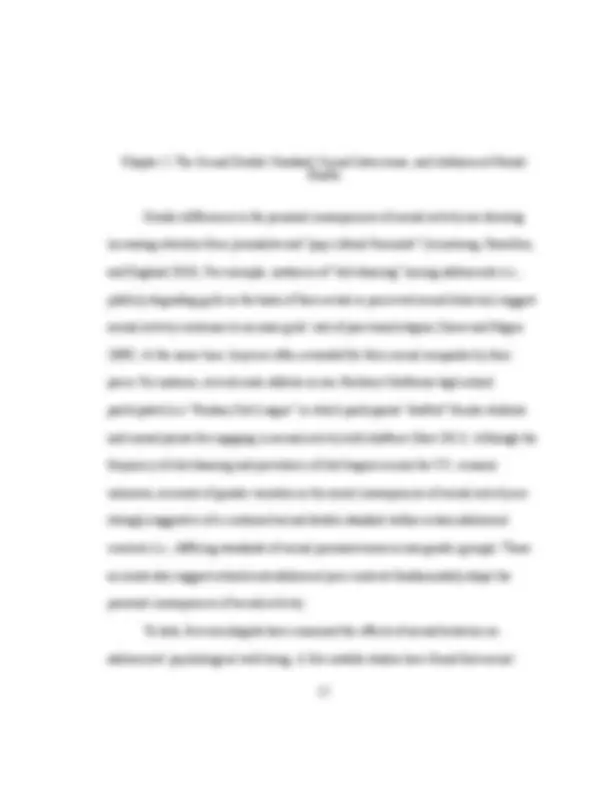
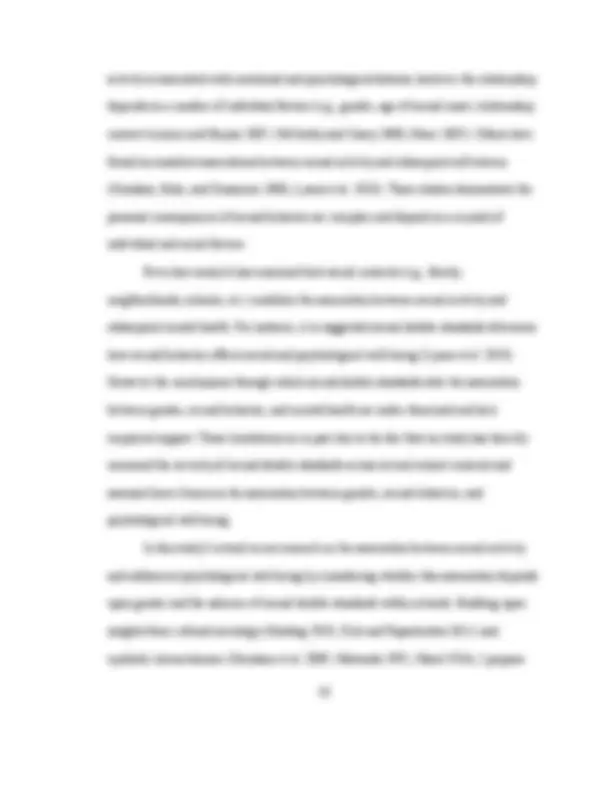
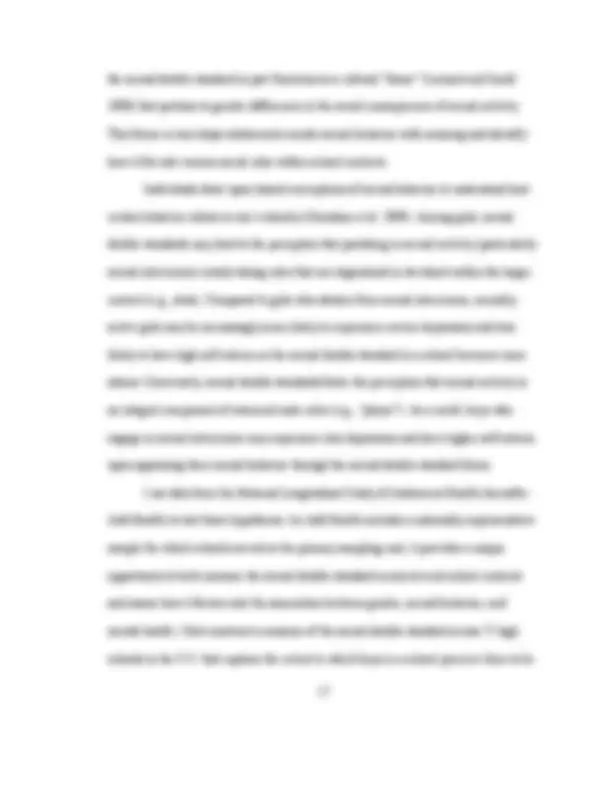
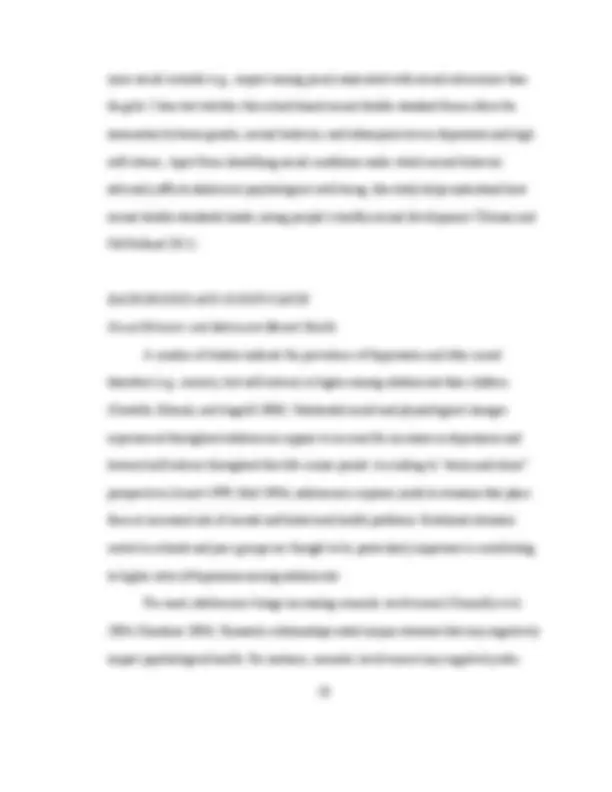
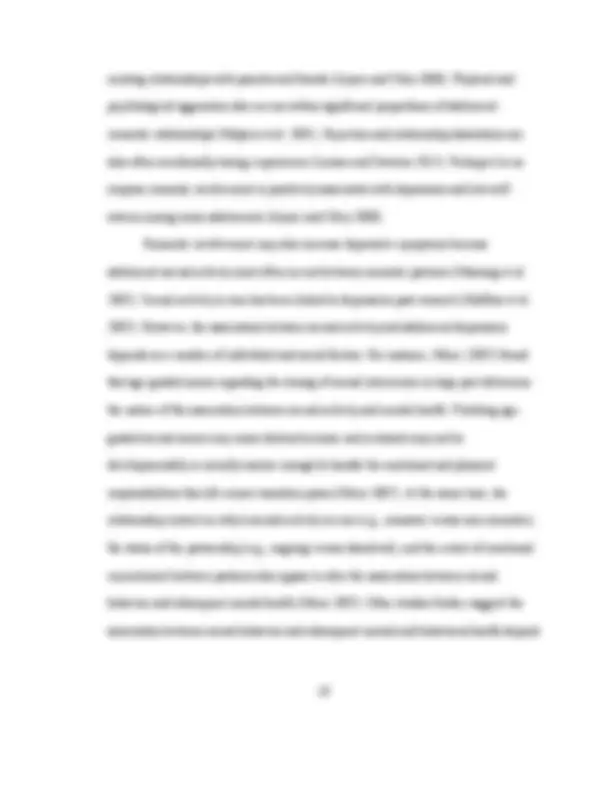
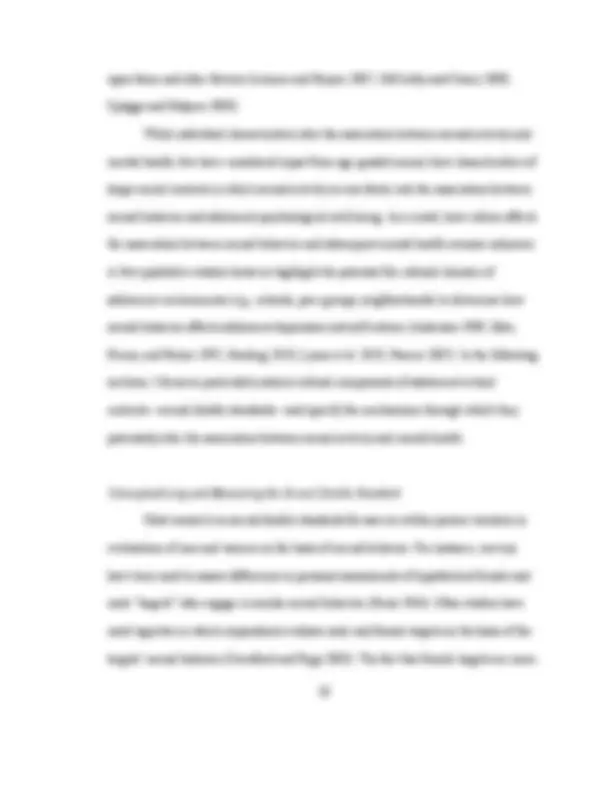
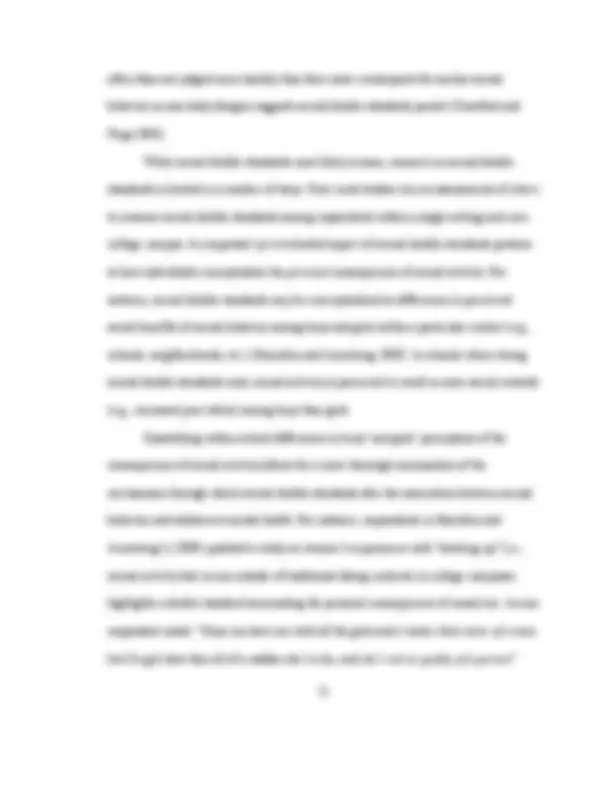
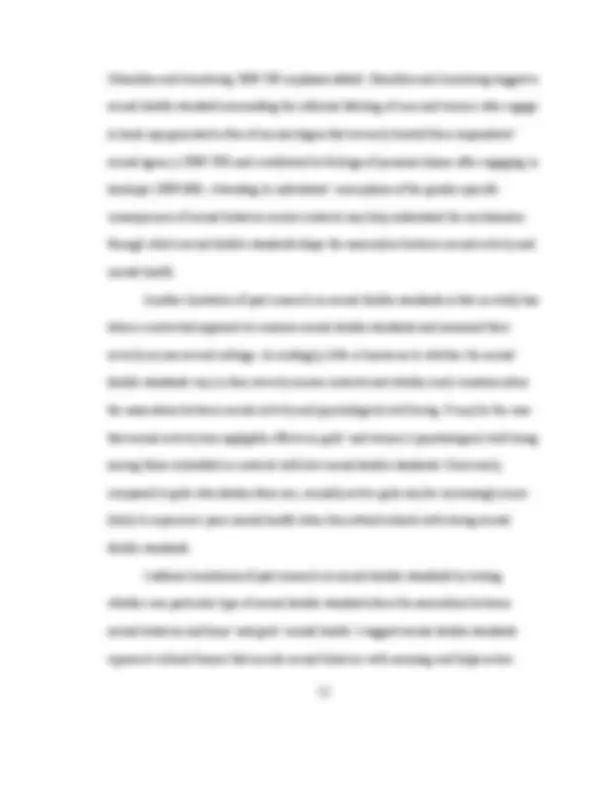
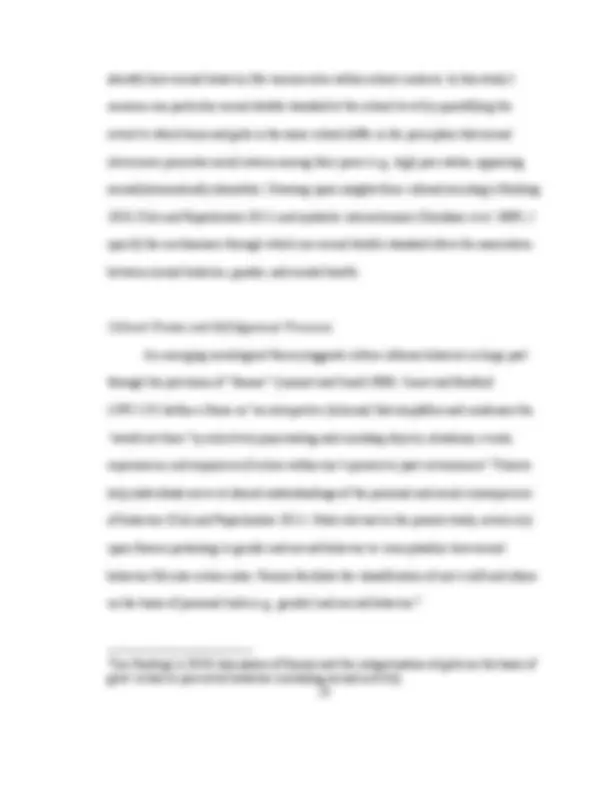
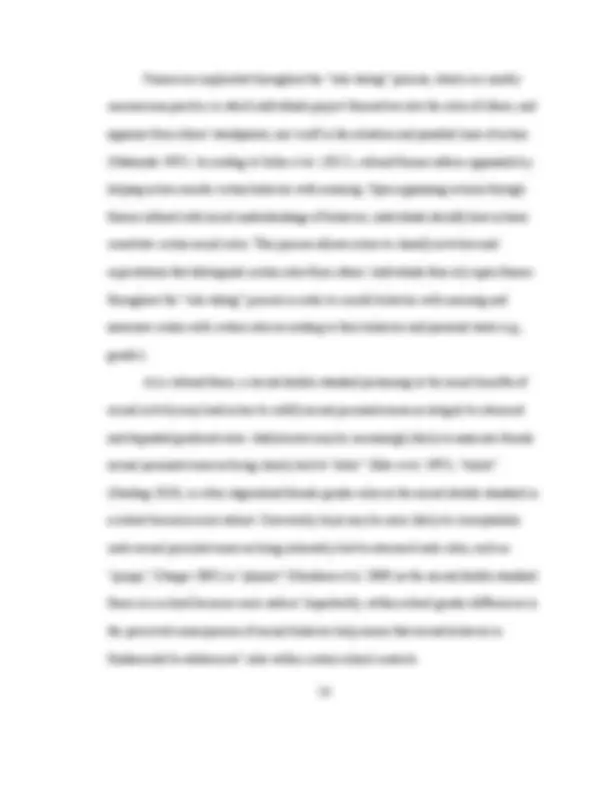
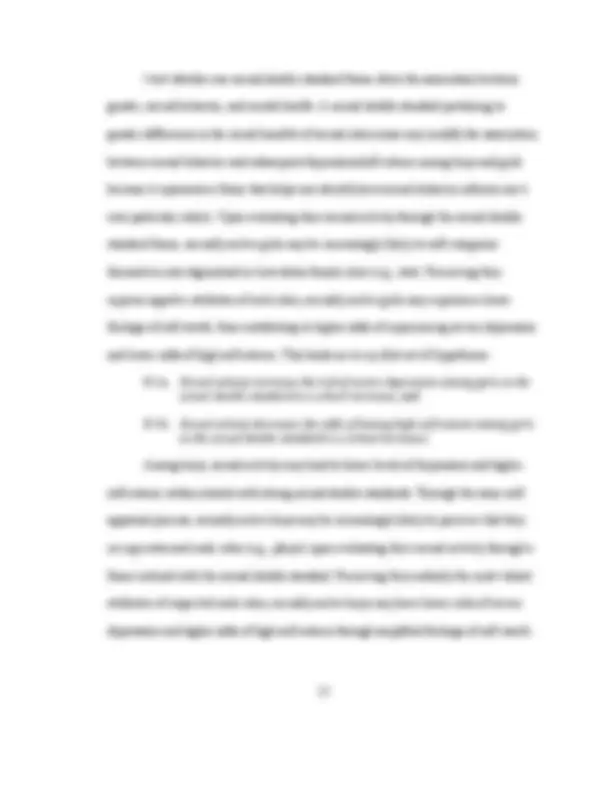
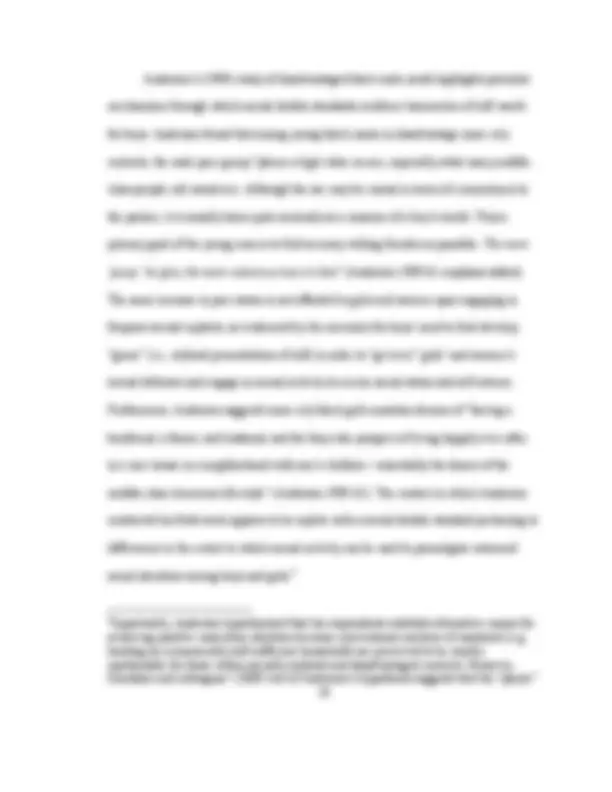
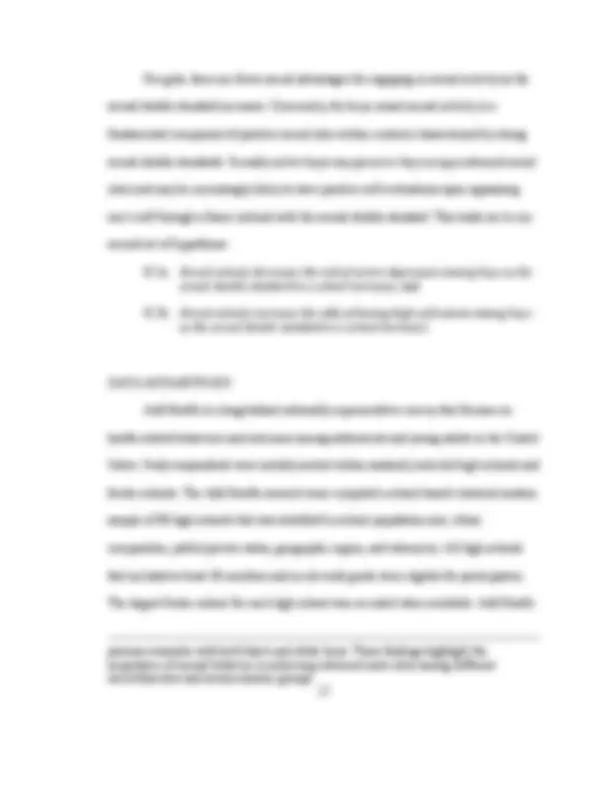
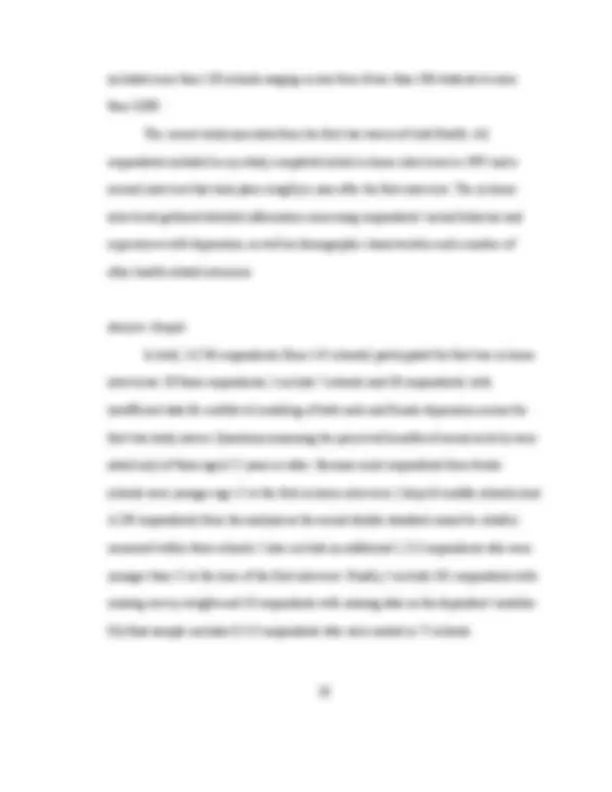
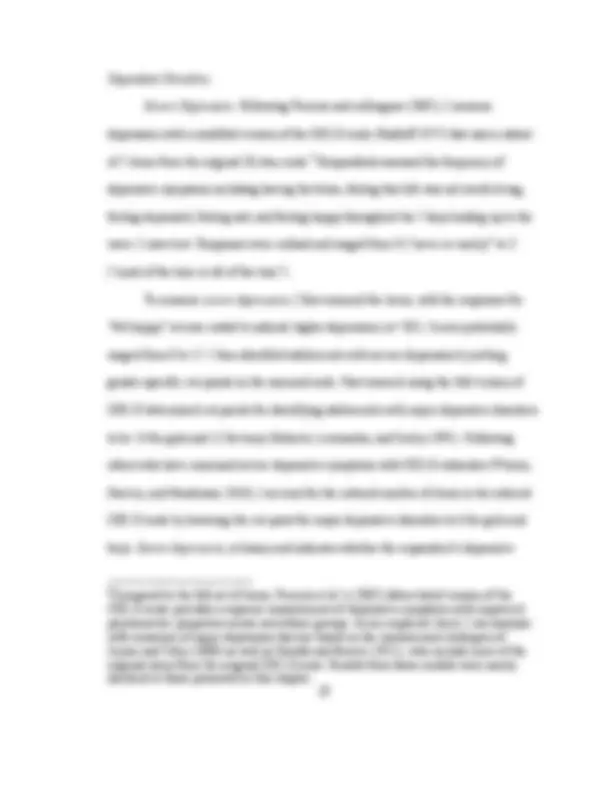
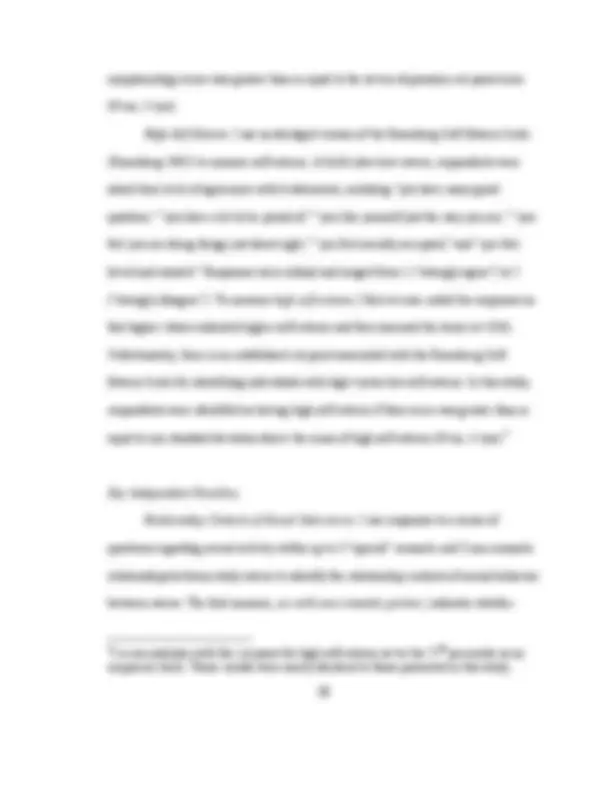
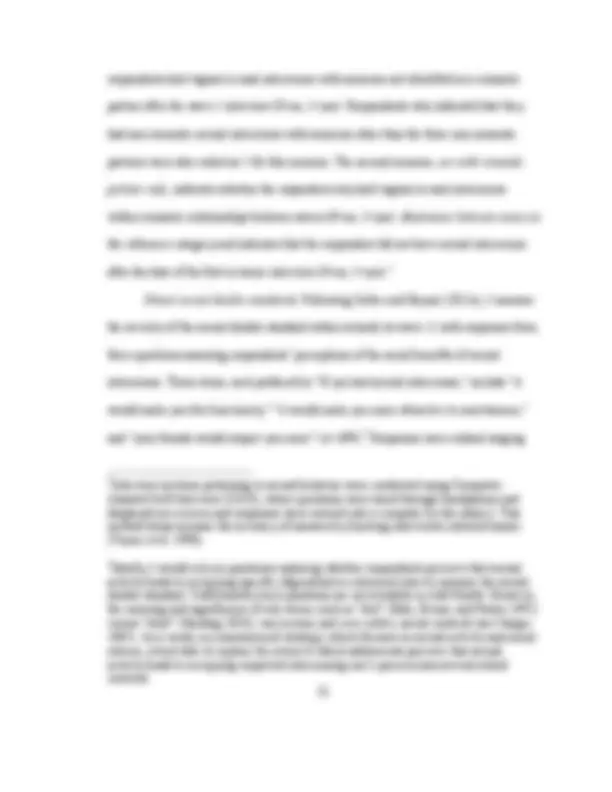
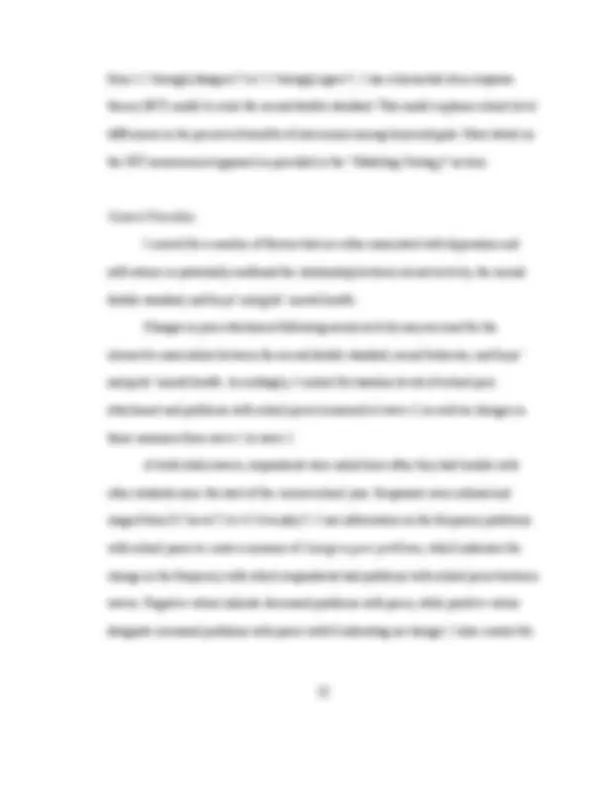
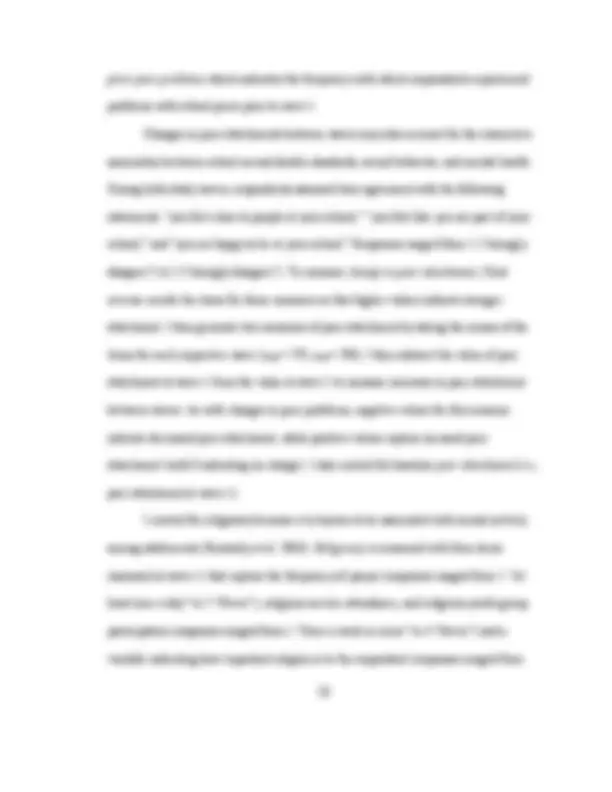
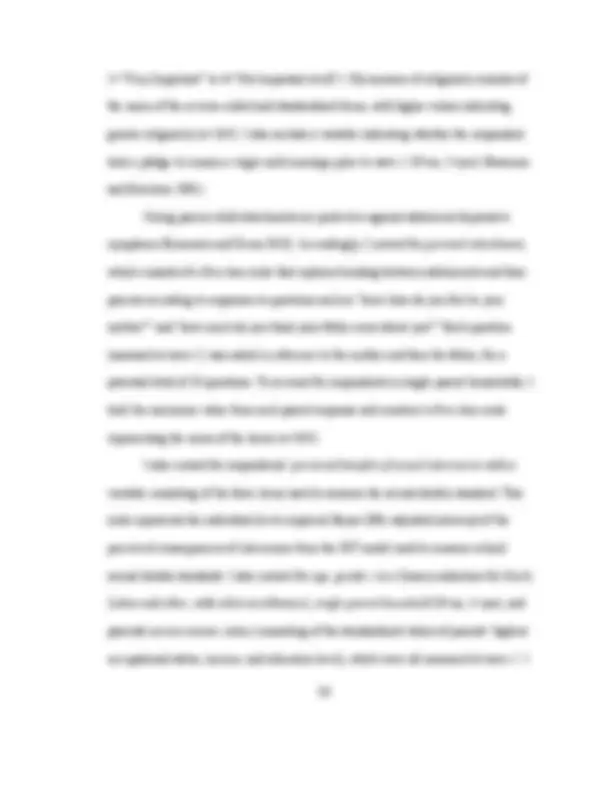
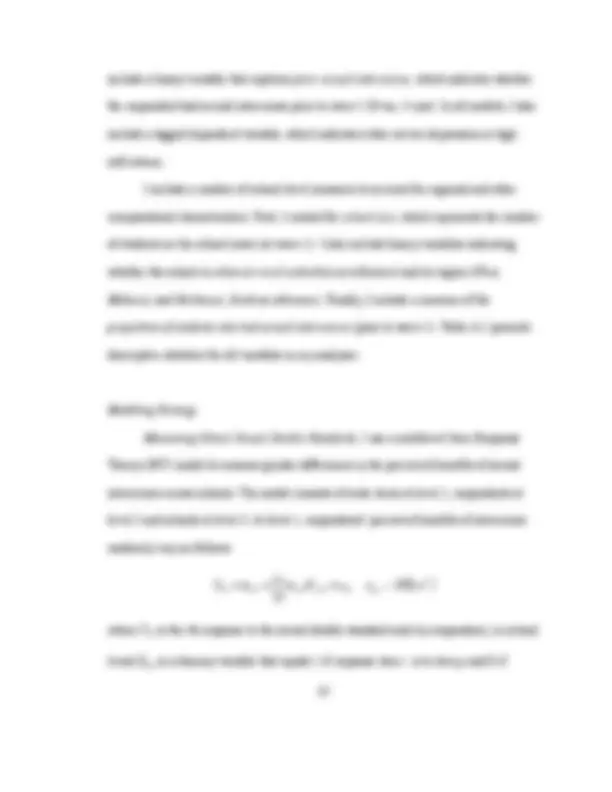
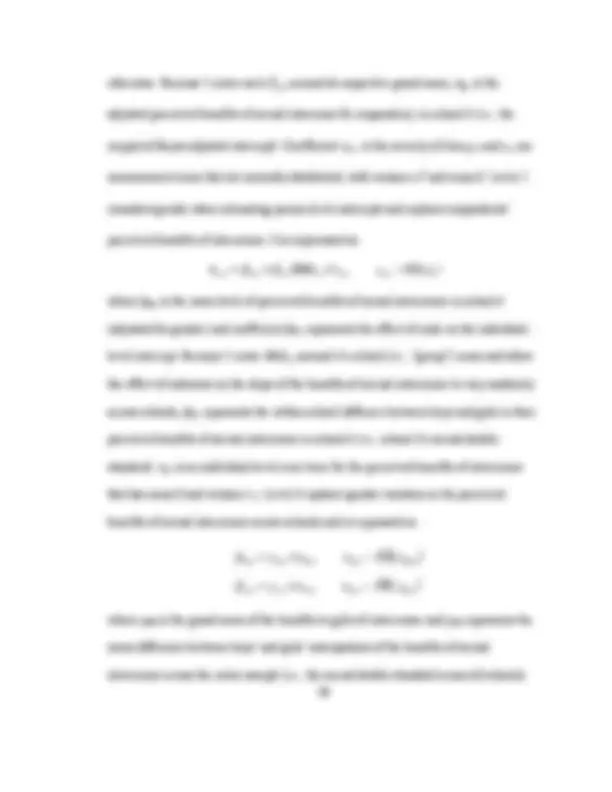
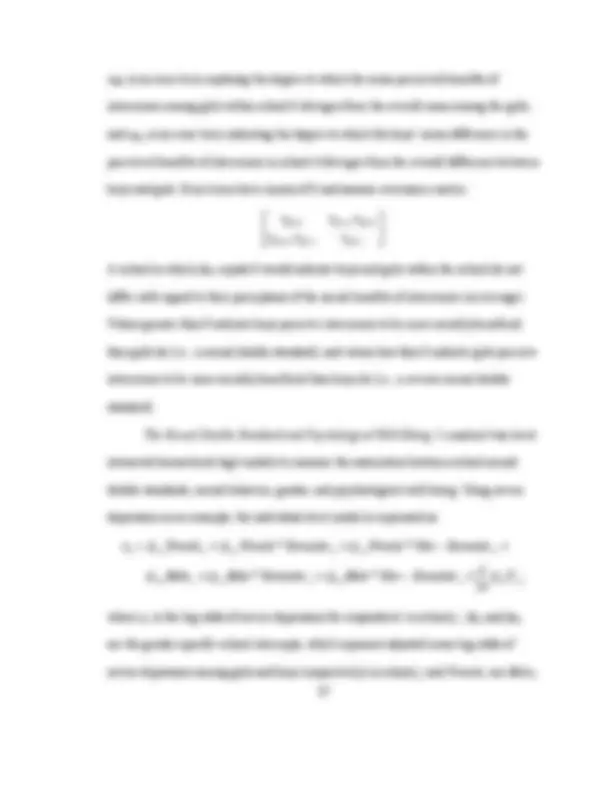
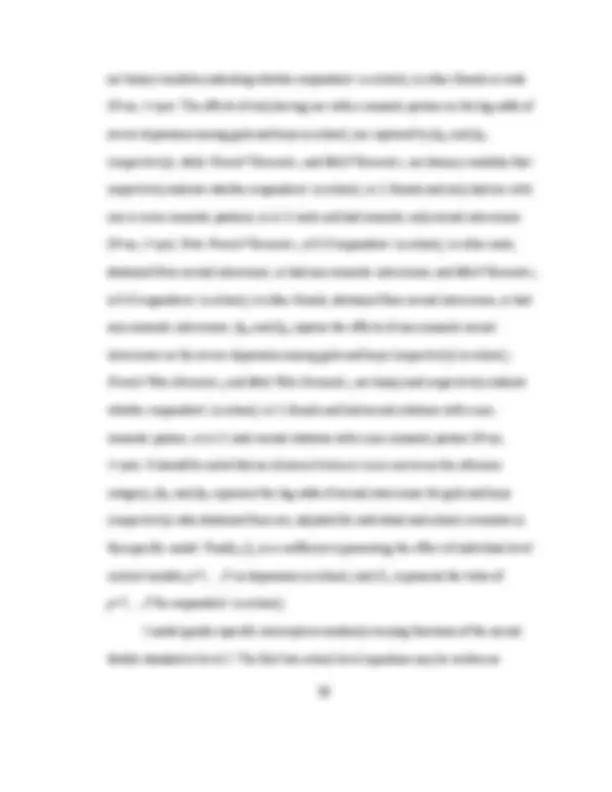
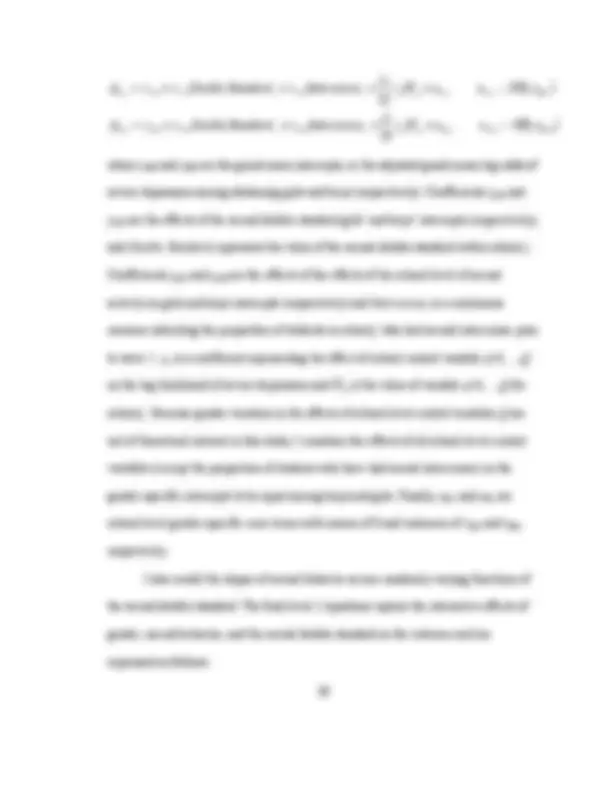
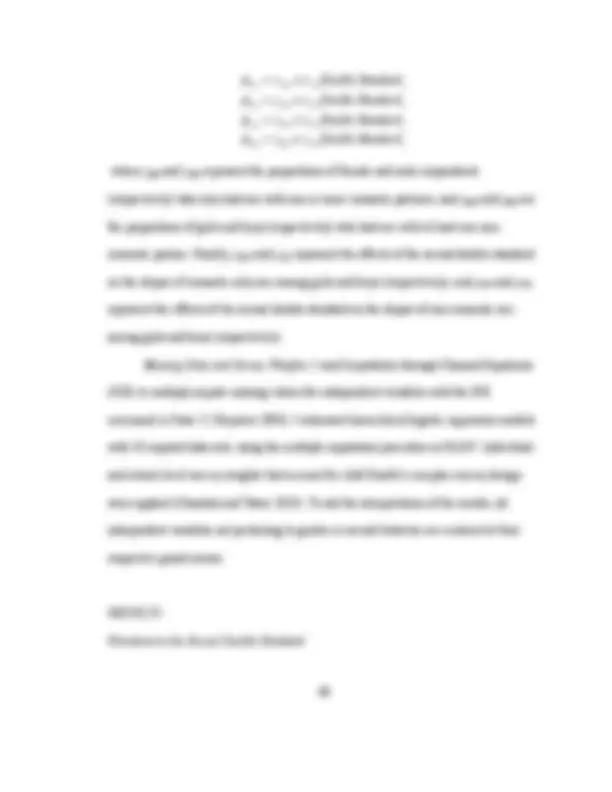
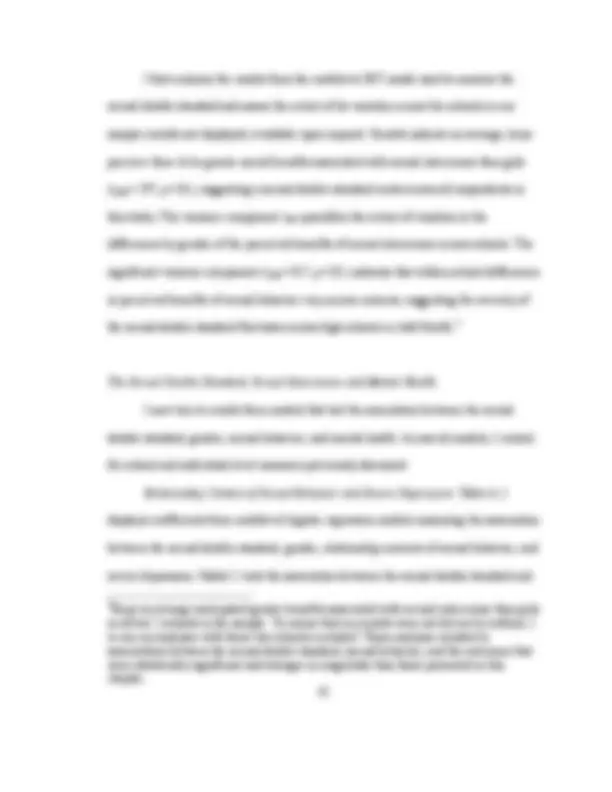
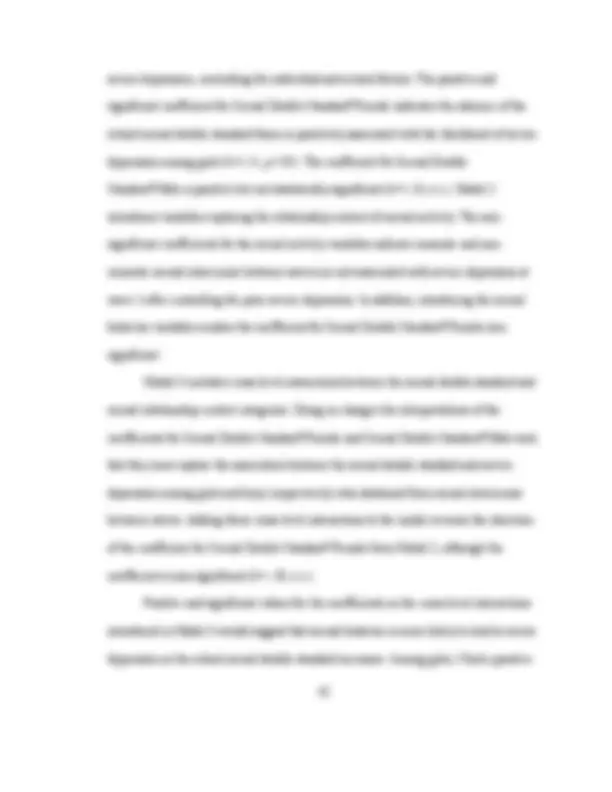
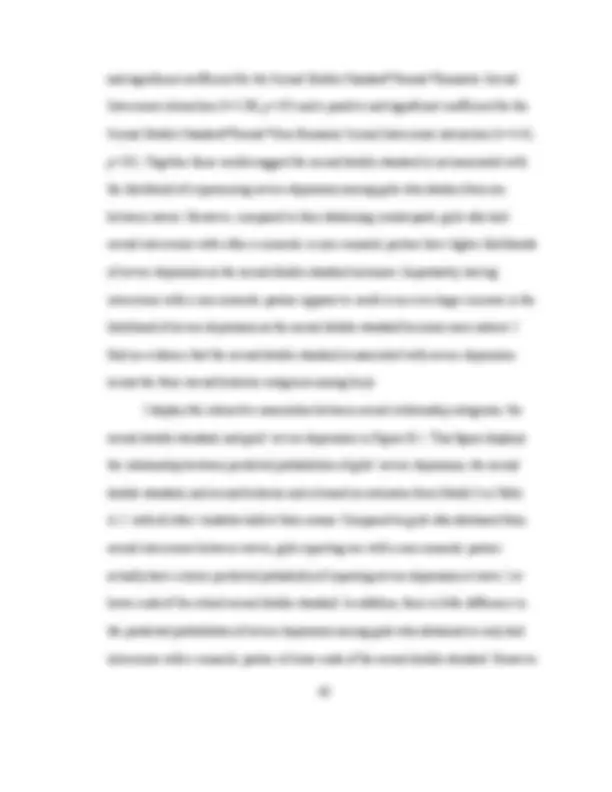

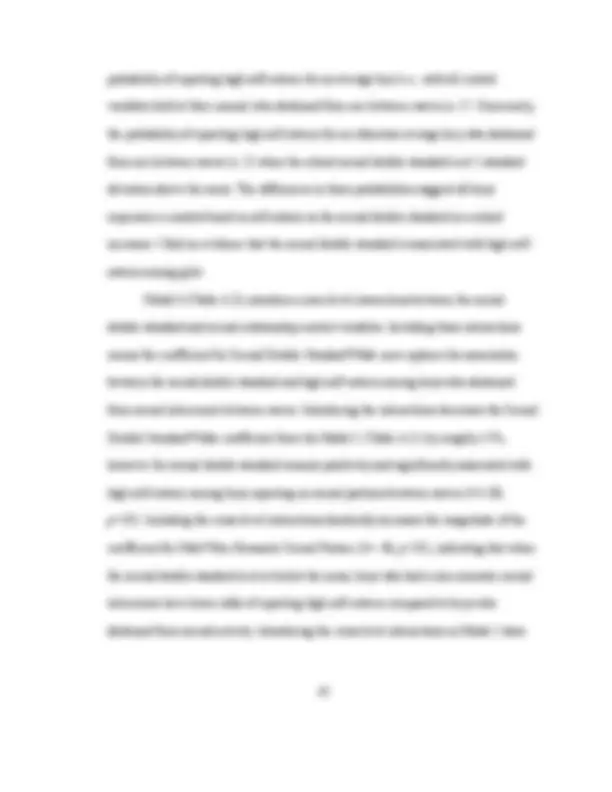
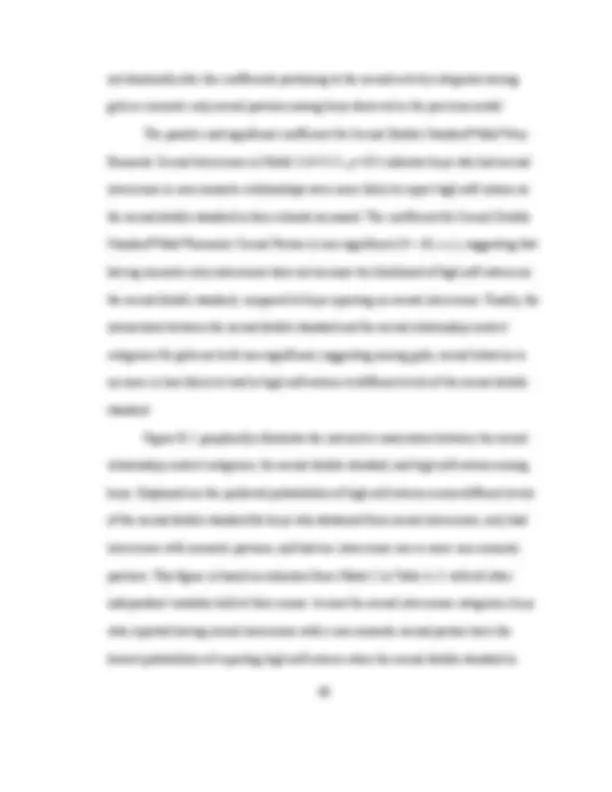
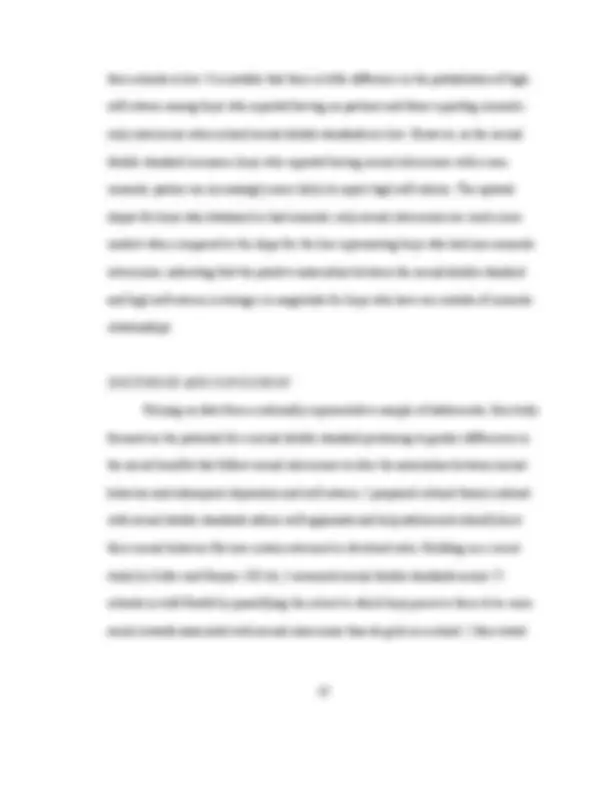
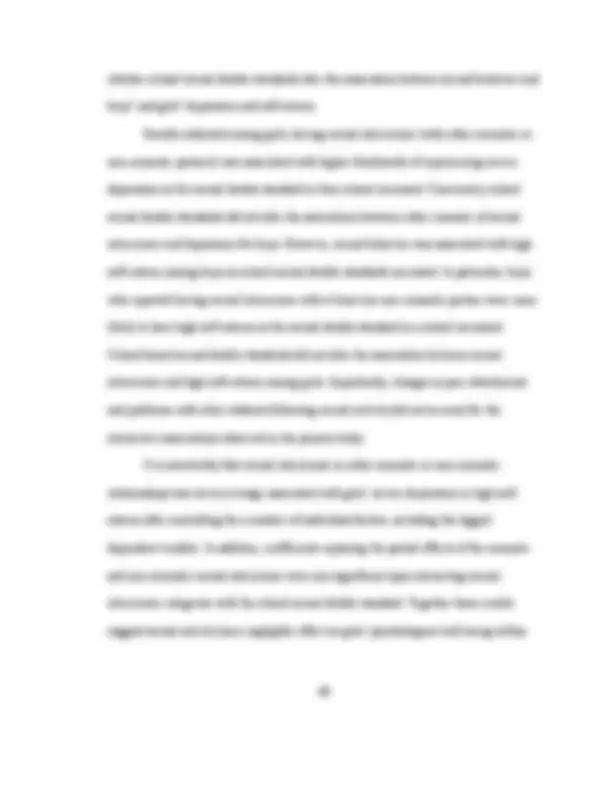
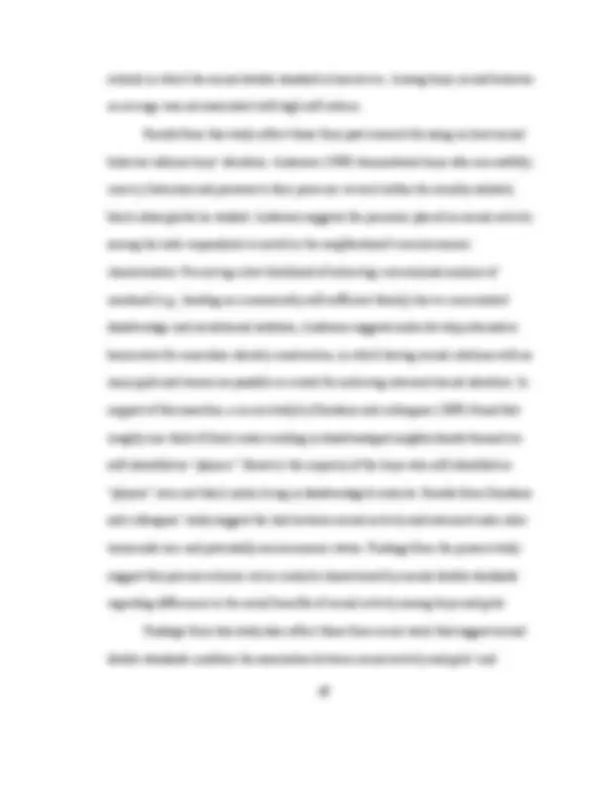
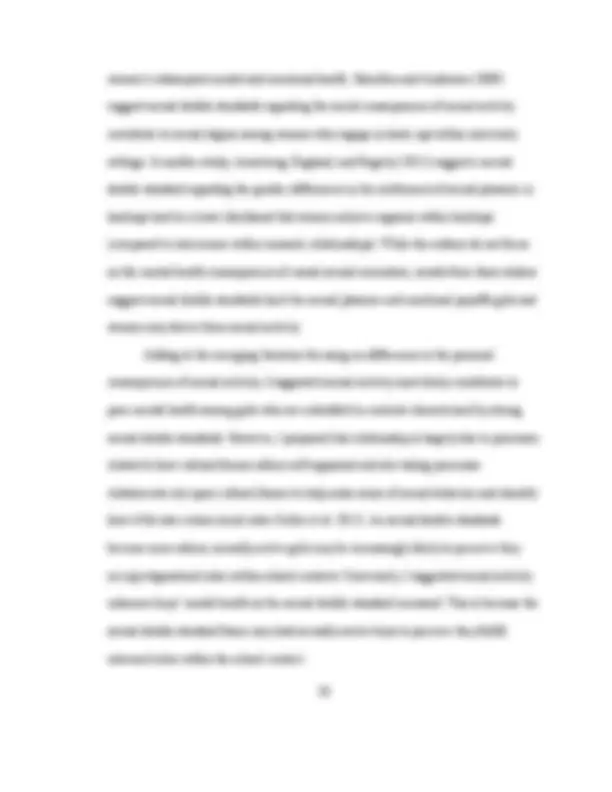
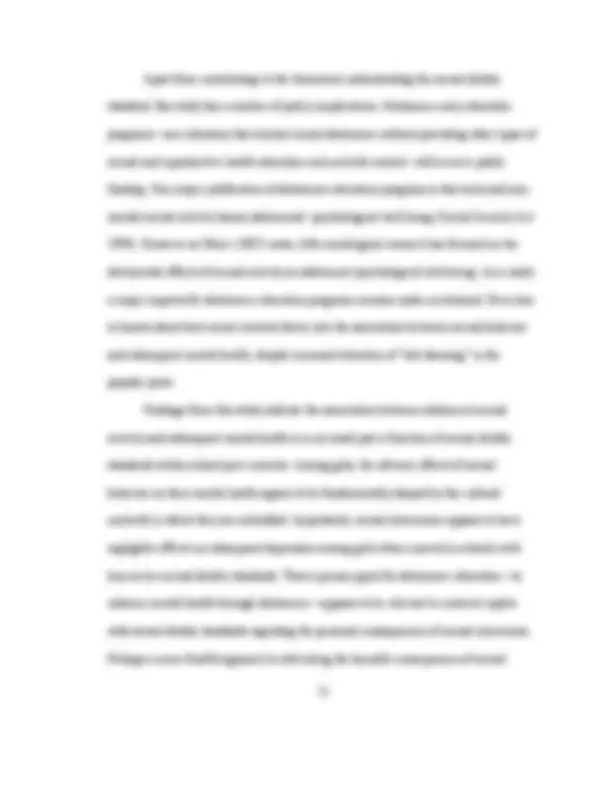
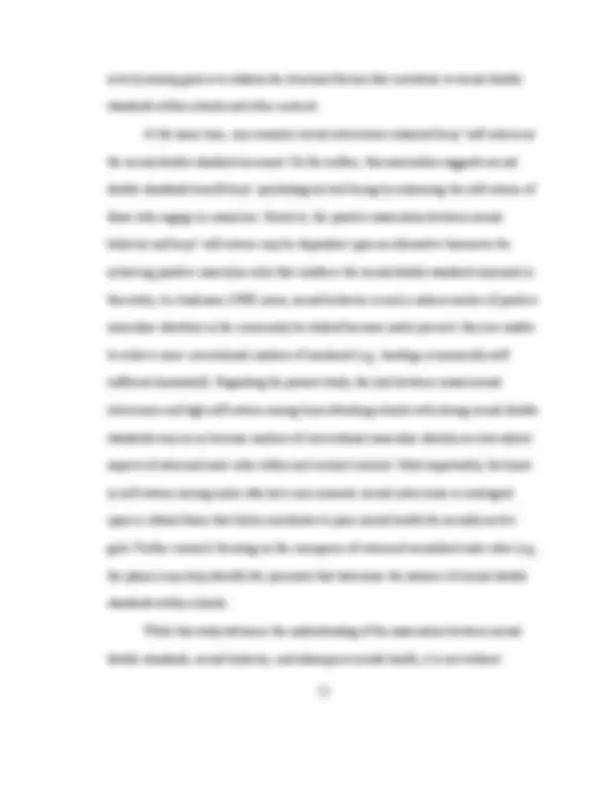
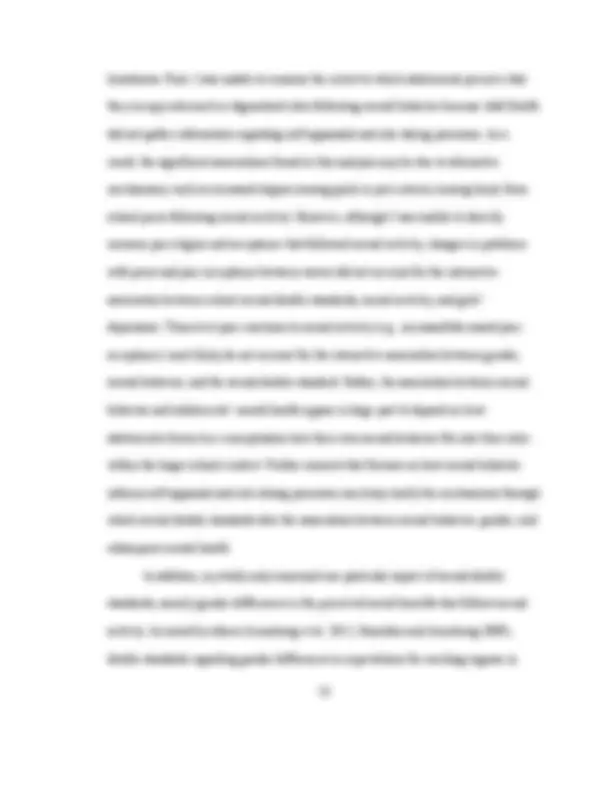
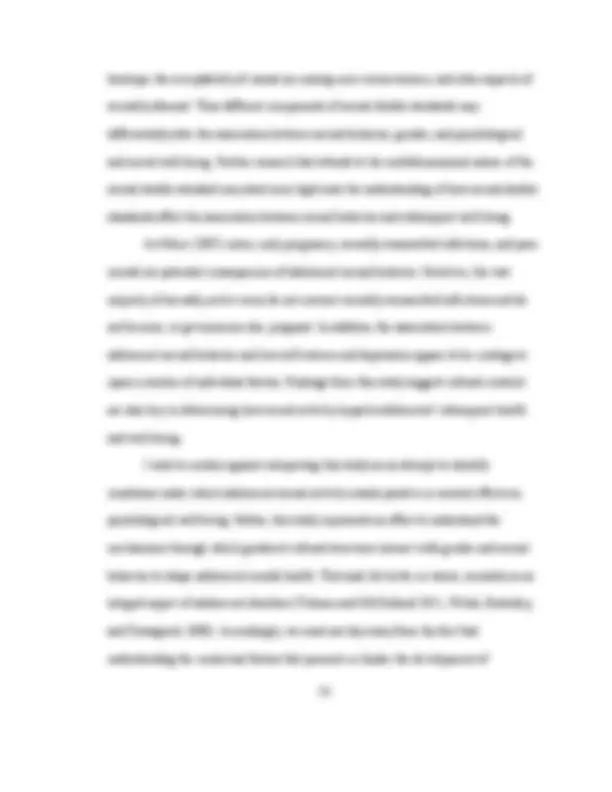

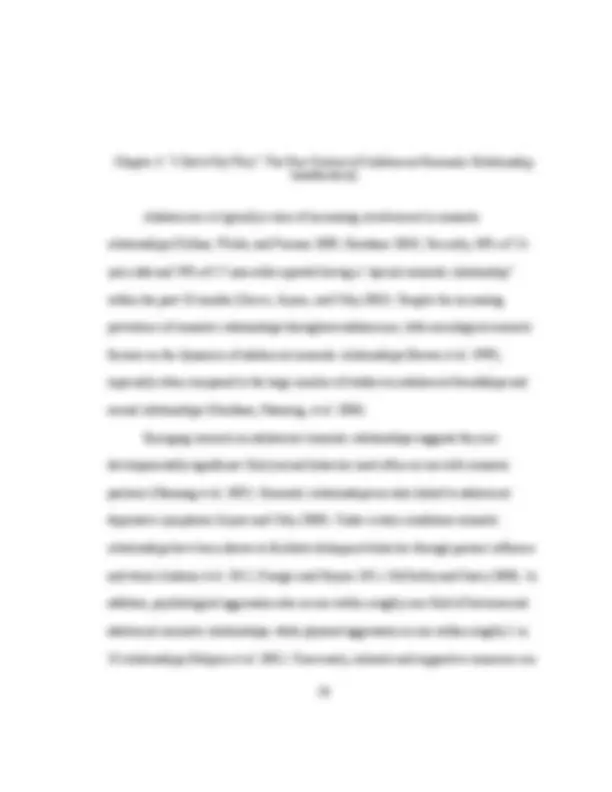
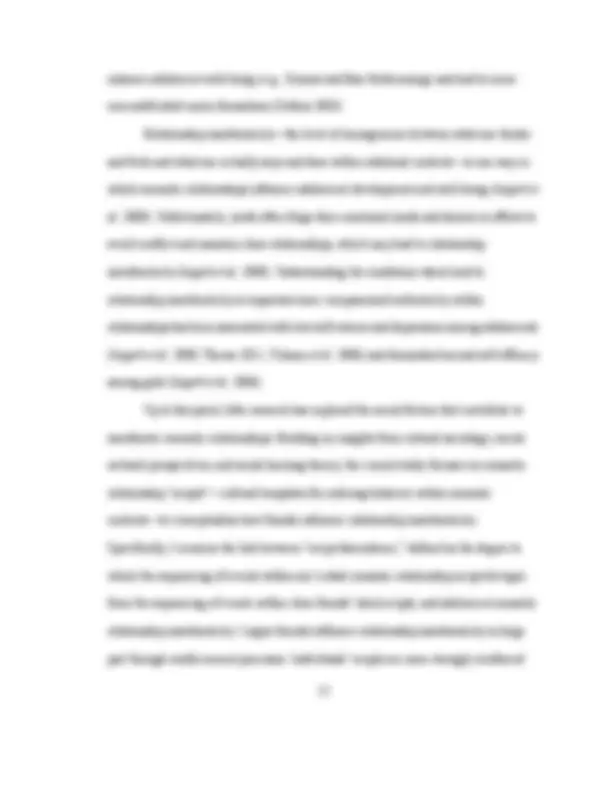
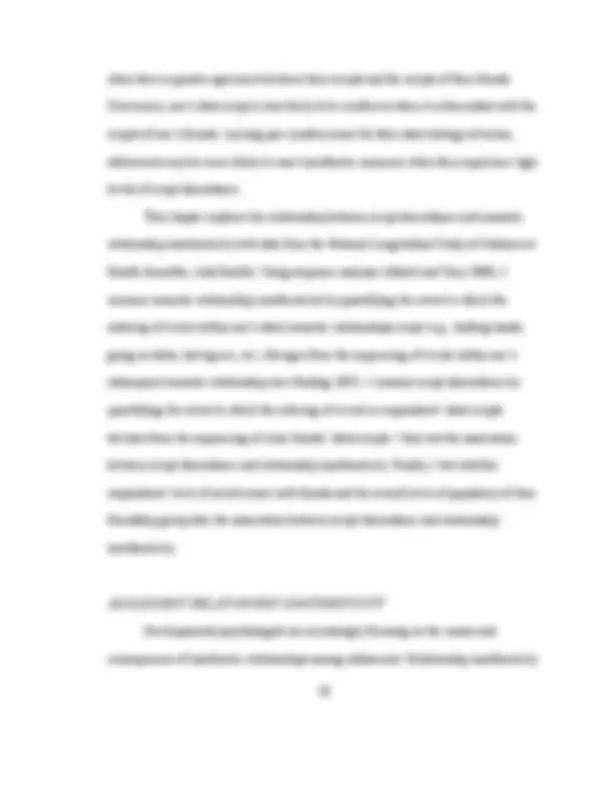
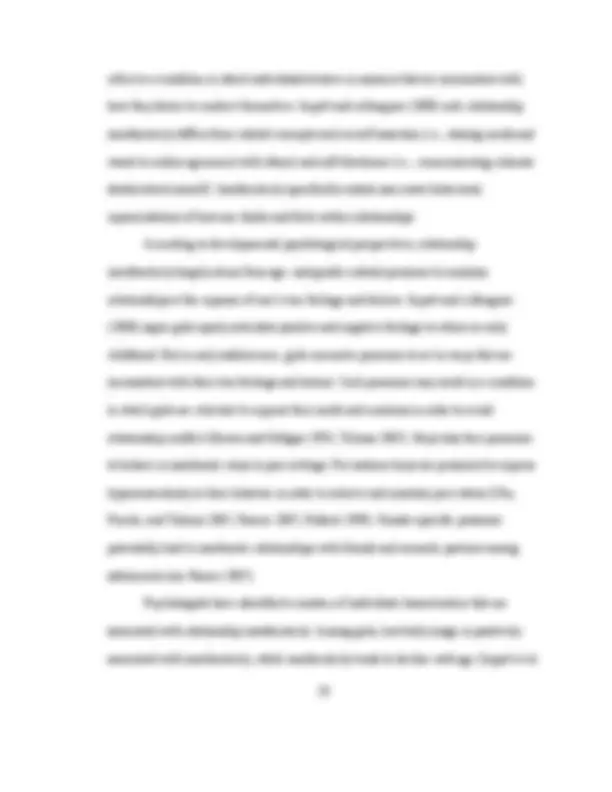
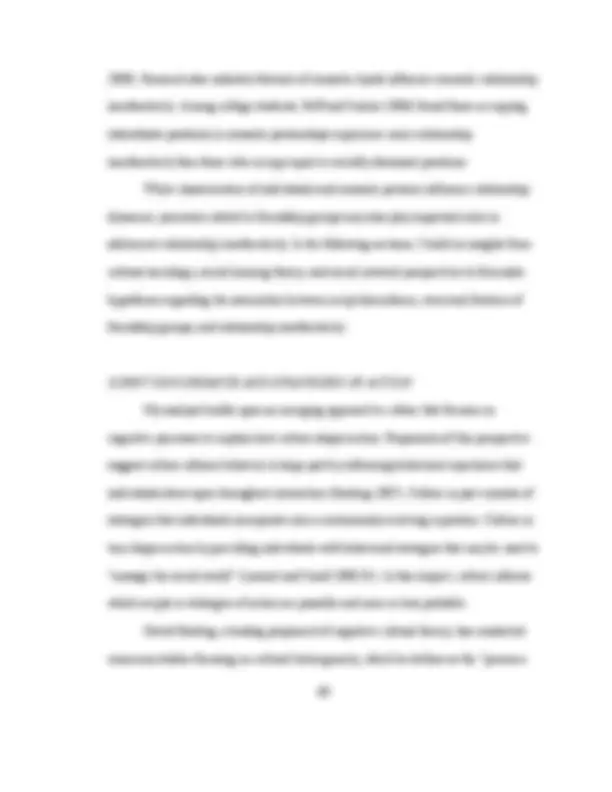
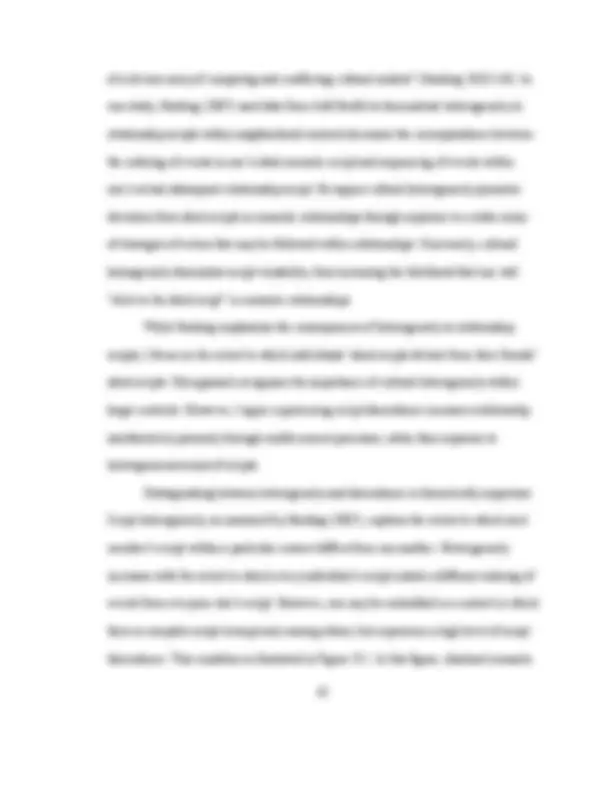
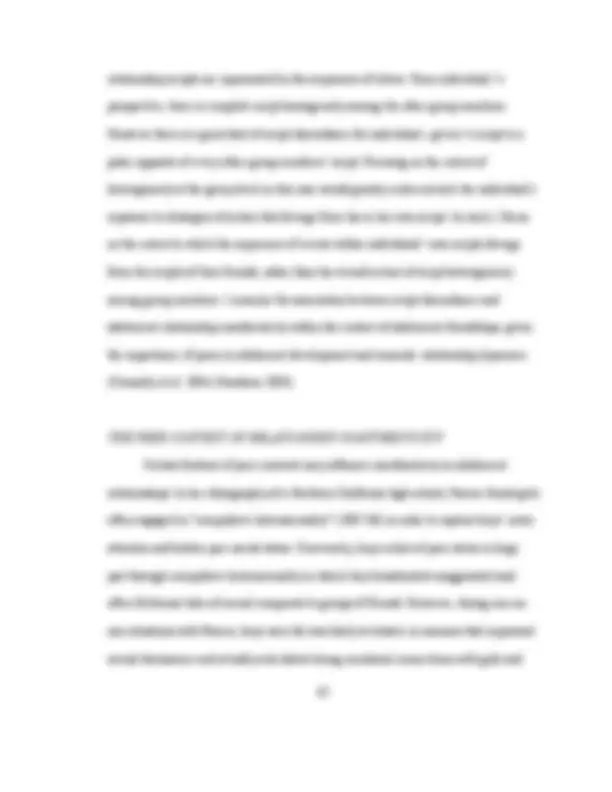
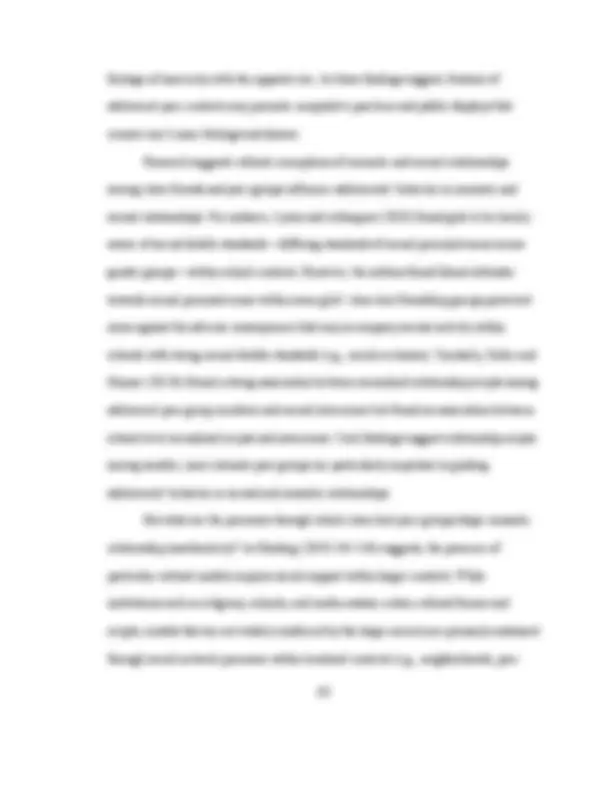
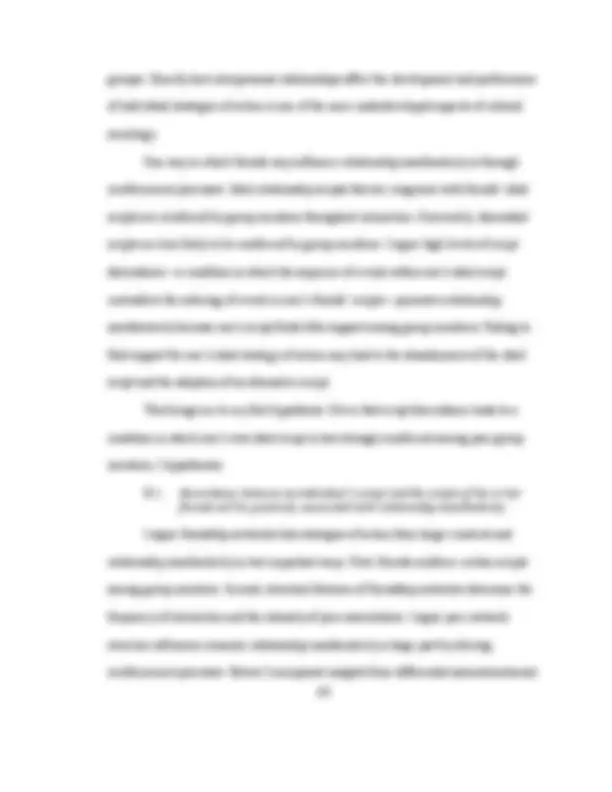
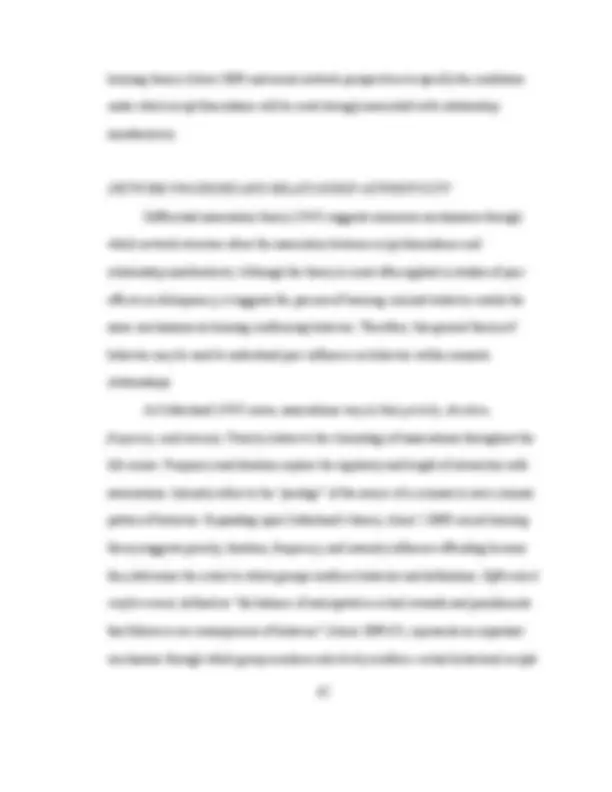
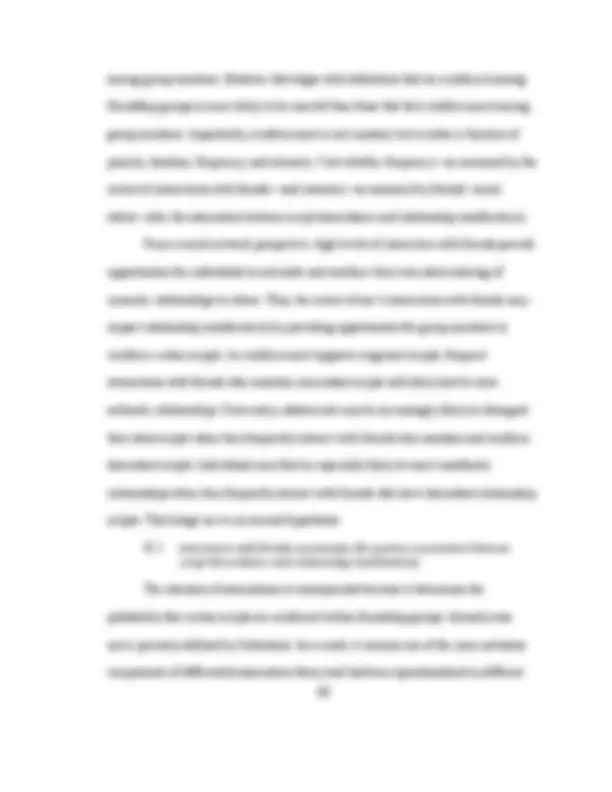
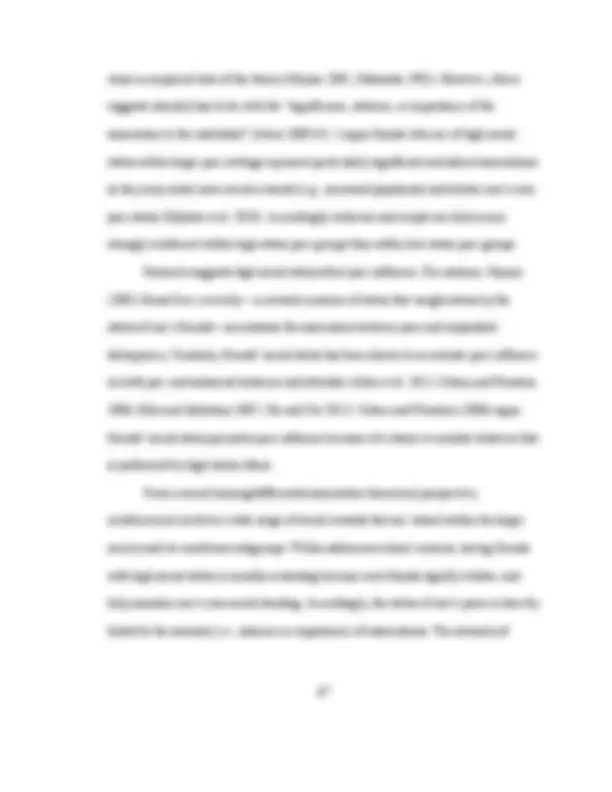
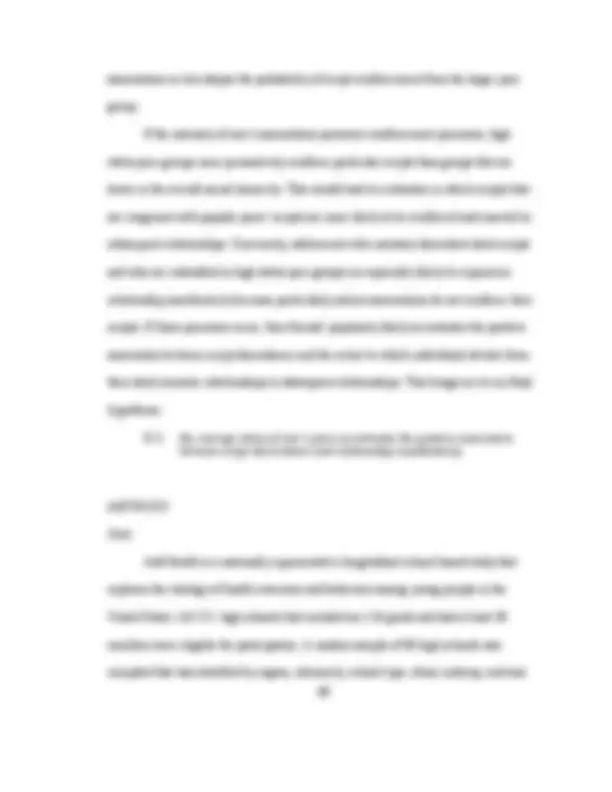
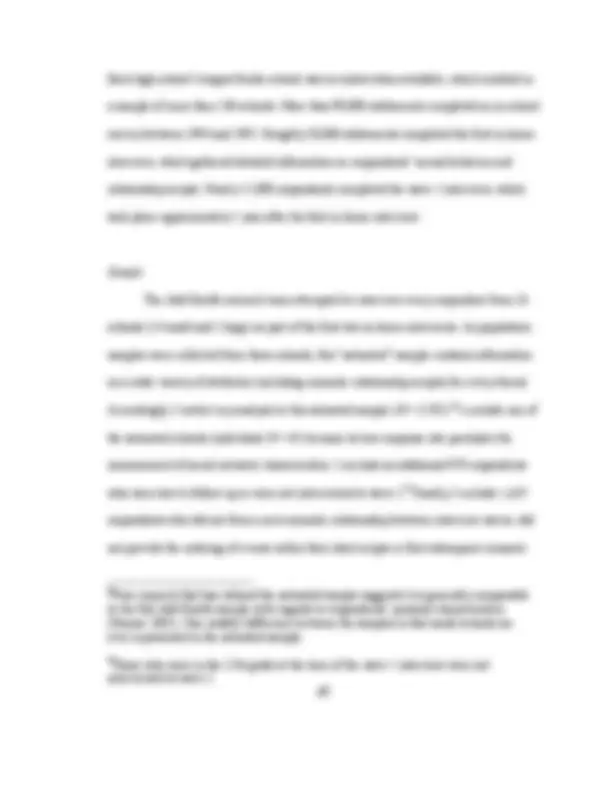
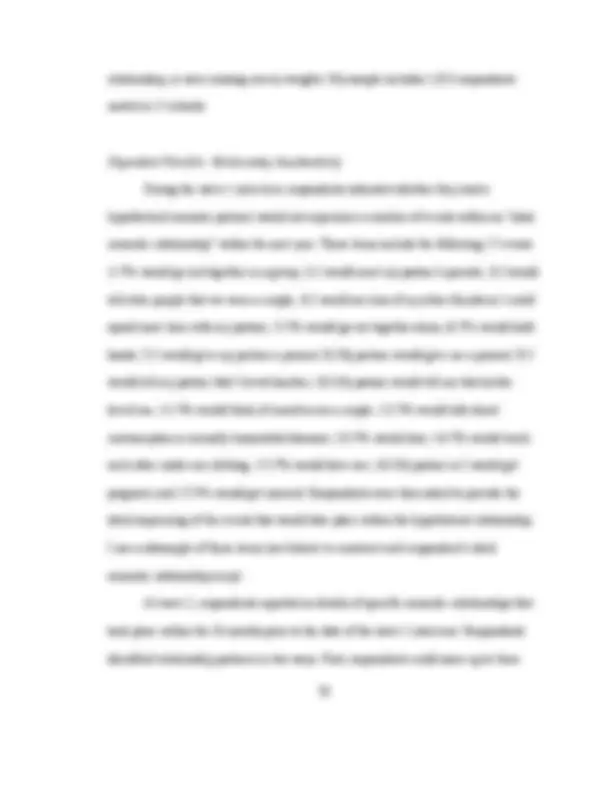
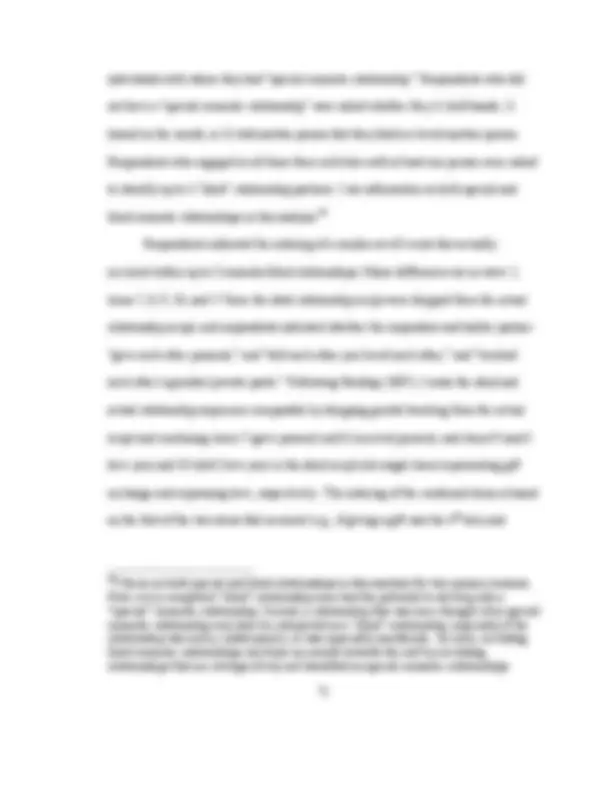
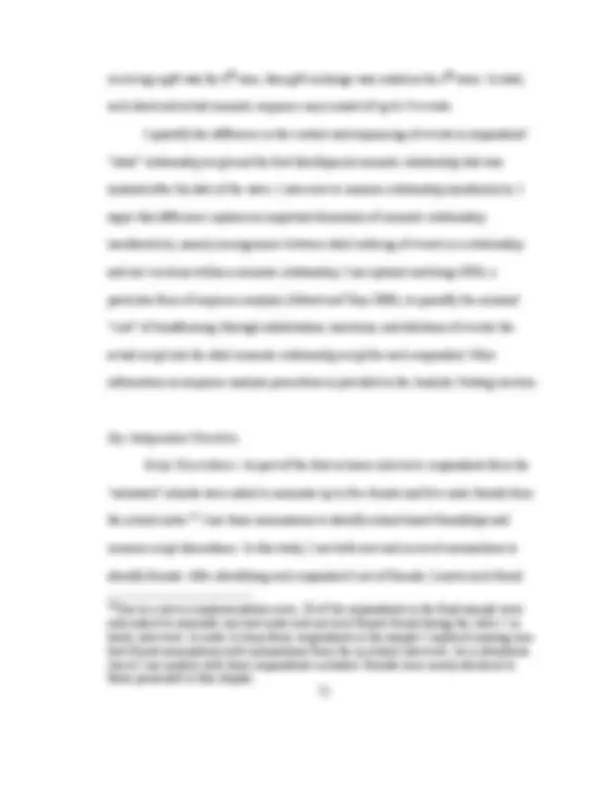
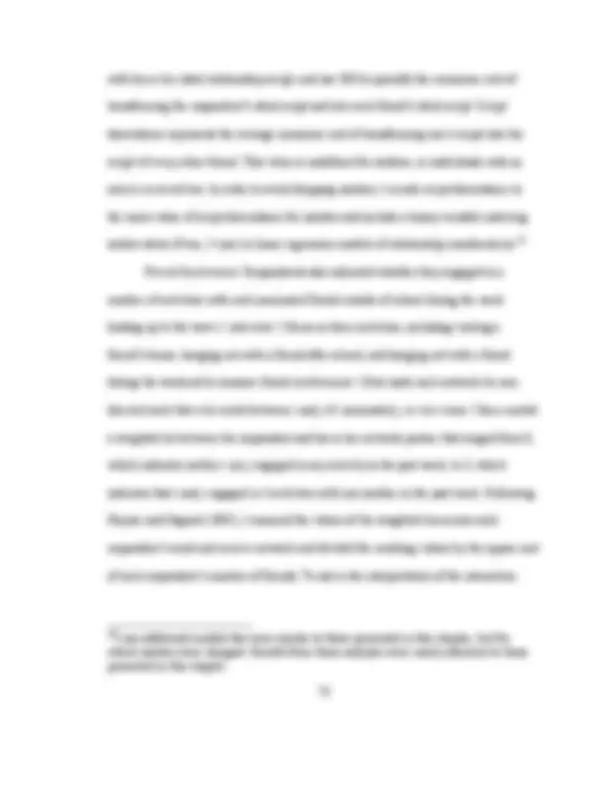
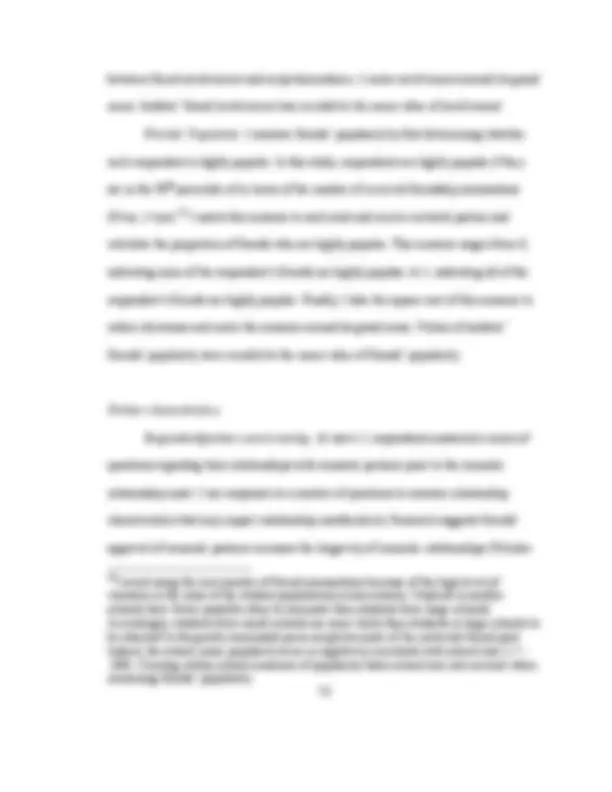
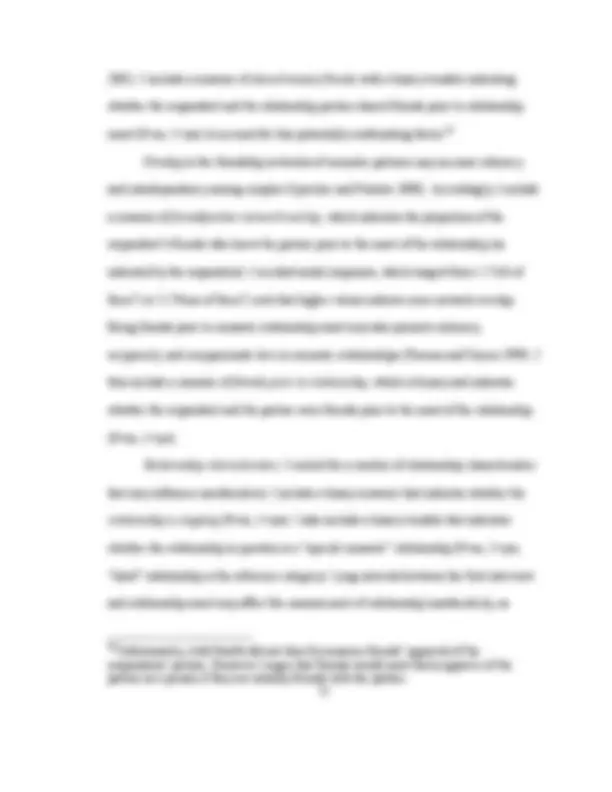
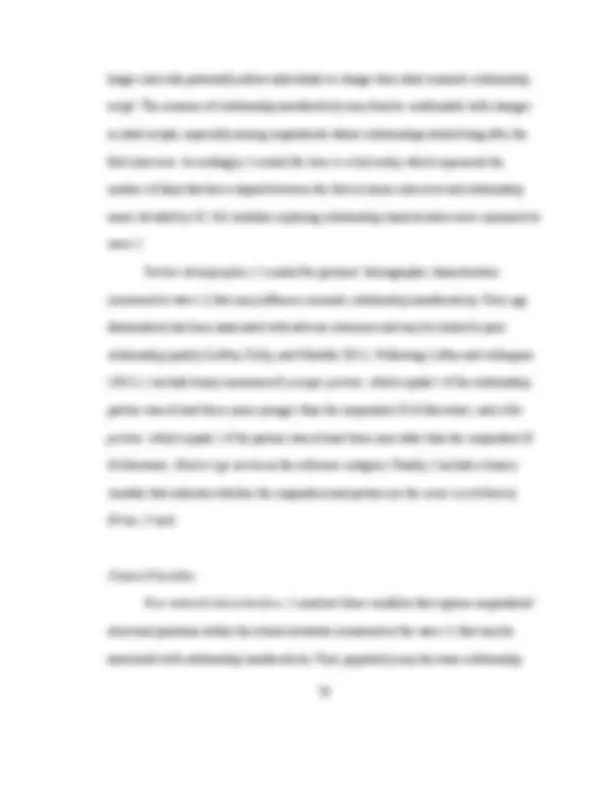
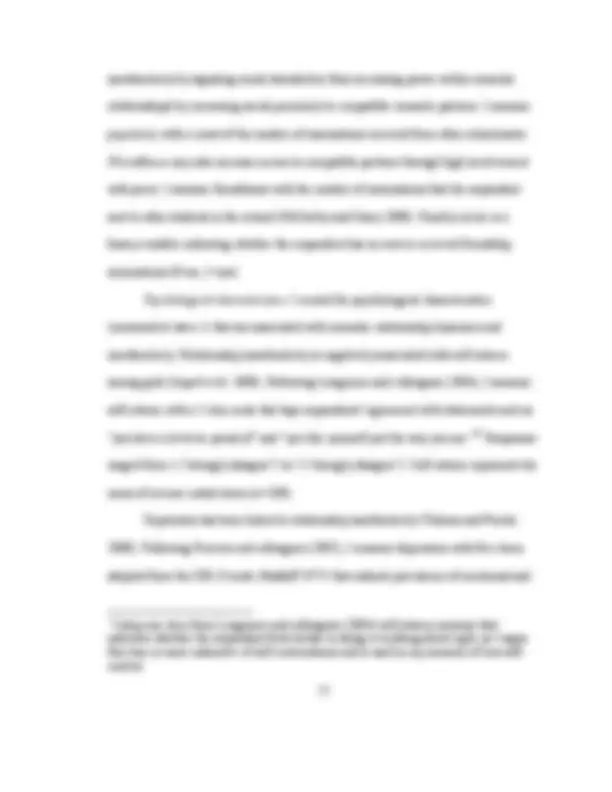
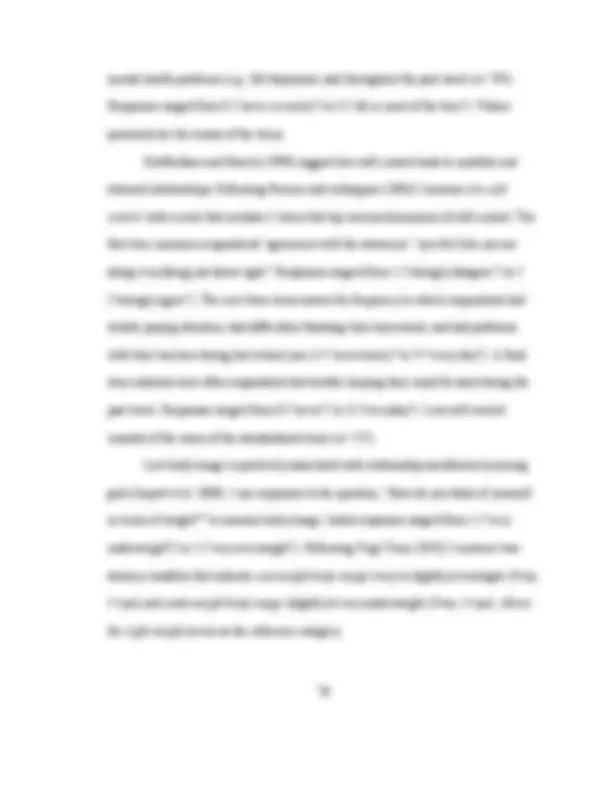
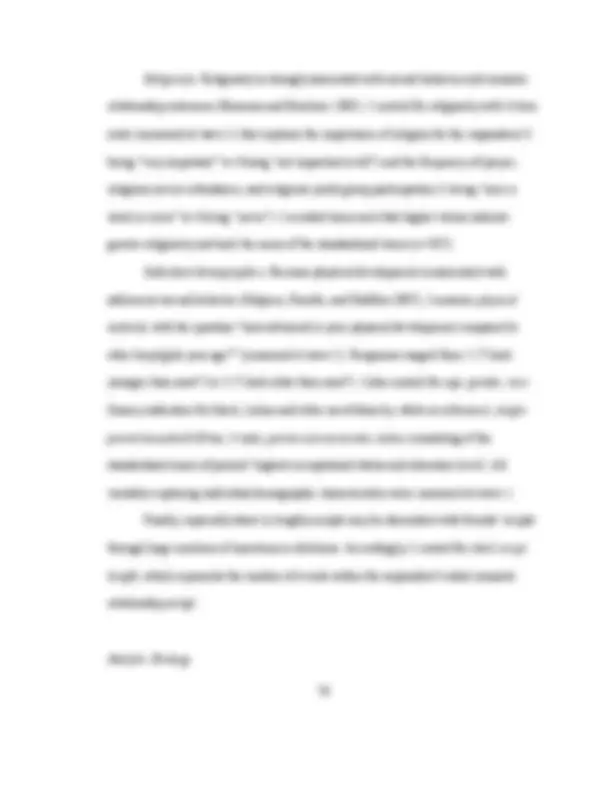
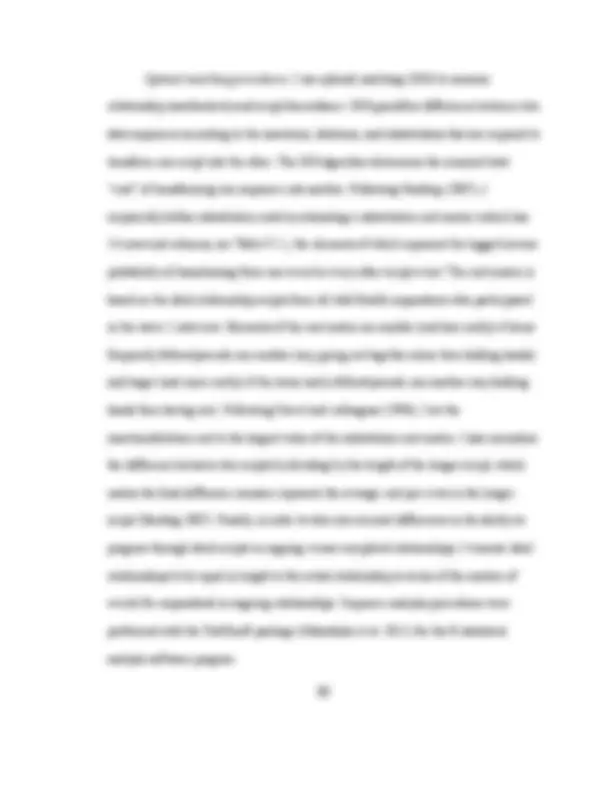
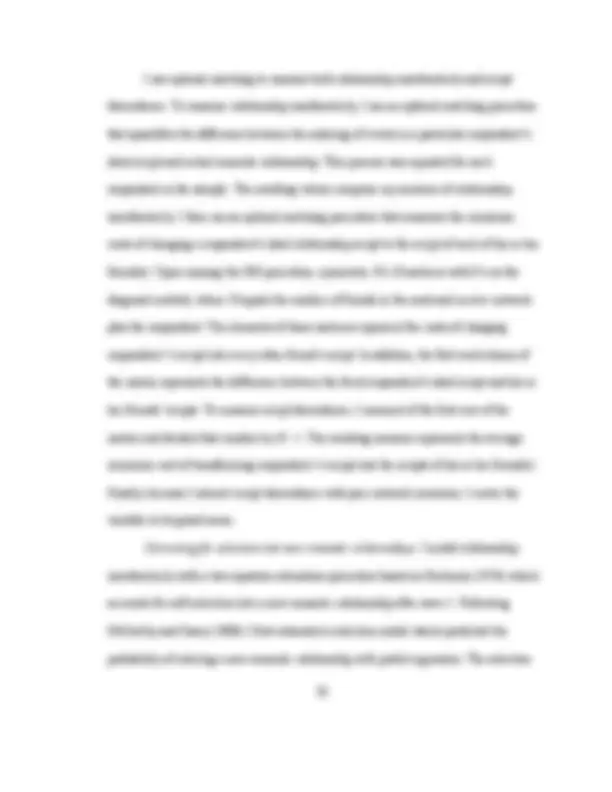
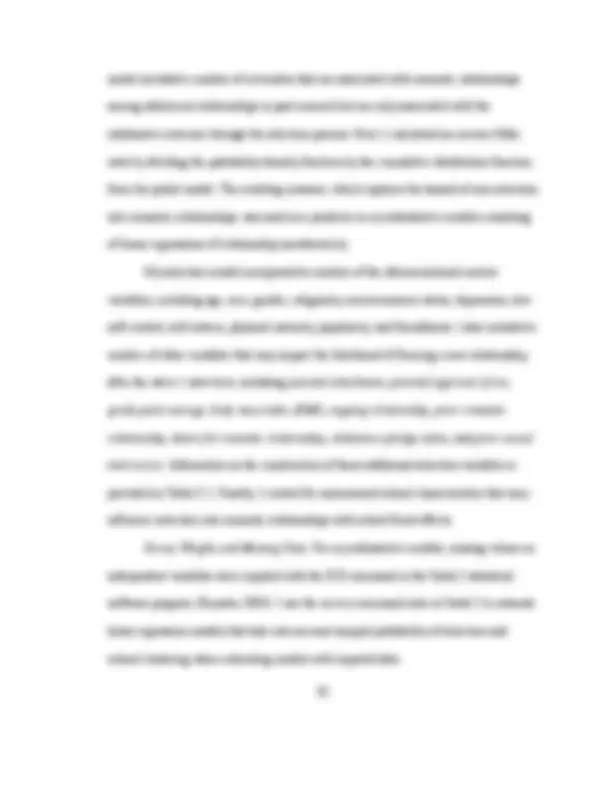
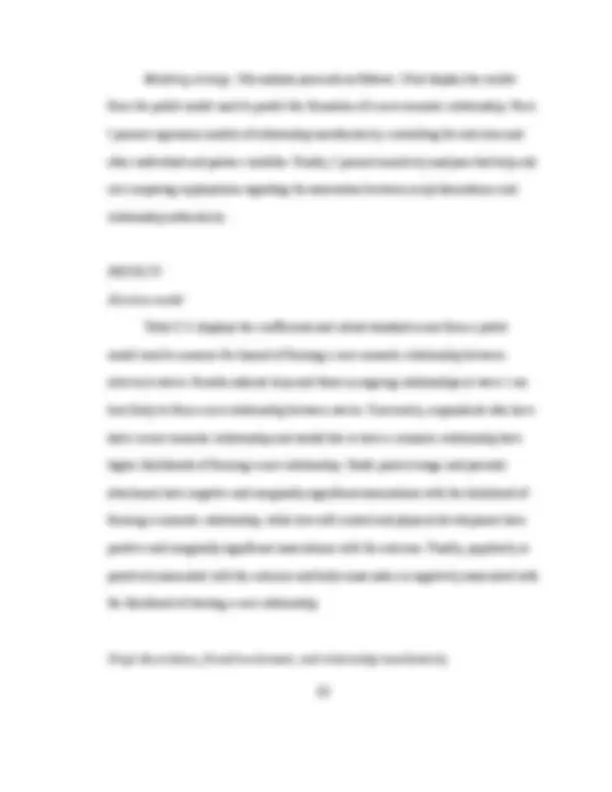
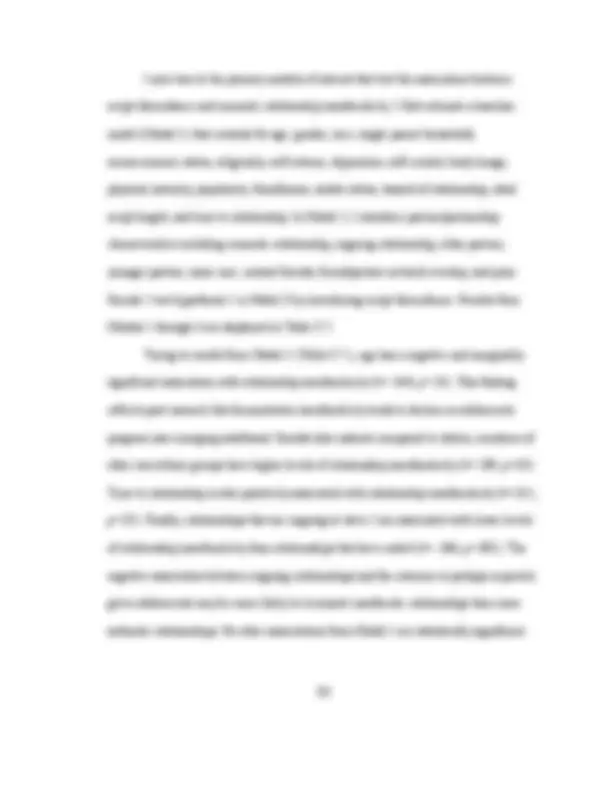
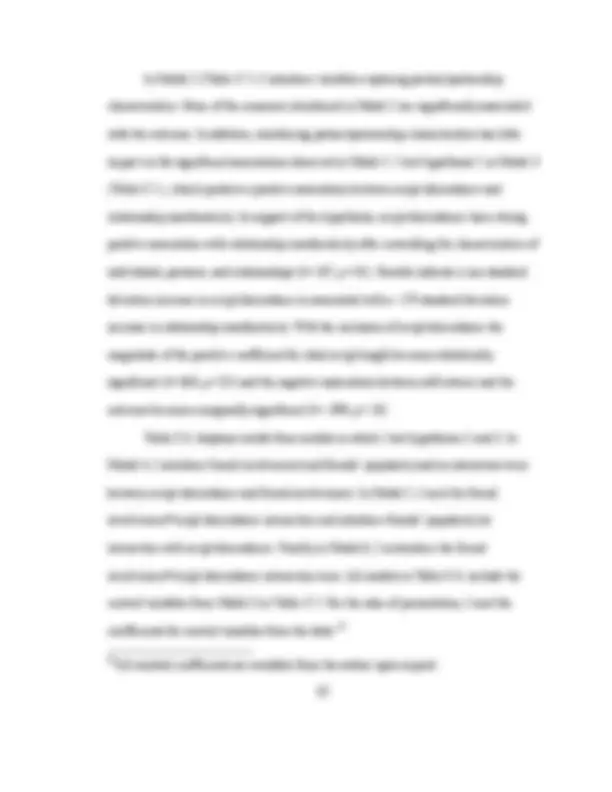


Study with the several resources on Docsity

Earn points by helping other students or get them with a premium plan


Prepare for your exams
Study with the several resources on Docsity

Earn points to download
Earn points by helping other students or get them with a premium plan
Community
Ask the community for help and clear up your study doubts
Discover the best universities in your country according to Docsity users
Free resources
Download our free guides on studying techniques, anxiety management strategies, and thesis advice from Docsity tutors
This dissertation explores the internal dynamics of early romantic relationships and their effects on mental health during adolescence. It highlights the significance of romantic relationships as the primary context for sexual activity and discusses the presence of sexual double standards and their impact on mental health. The study also examines the concept of relationship inauthenticity and its association with low self-esteem, depression, and diminished sexual self-efficacy among adolescents.
What you will learn
Typology: Assignments
1 / 189

This page cannot be seen from the preview
Don't miss anything!





























































































Three Essays on the Cultural Context of Adolescent Romantic Relationships and Sexual Behavior
Presented in Partial Fulfillment of the Requirements for the Degree Doctor of Philosophyin the Graduate School of The Ohio State University
By Brian Soller, M.A. Graduate Program in Sociology
The Ohio State University 2013
Dissertation Committee: Christopher R. Browning, Co-Advisor Dana L. Haynie, Co-Advisor Hui Zheng
Copyrighted by Brian Soller 2013
iii
school increases. Conversely, boys who engaged in sexual intercourse with one or more non-romantic partners are more likely to report high self-esteem as the sexual double standard increases. Second, I integrate insights from cultural sociology and differential association/social learning theories to explain how cultural and structural features of friendship groups influence adolescent romantic relationship inauthenticity—the extent of incongruence between one’s thoughts/feelings and actions within romantic contexts. I use sequence analysis and linear regression to test whether adolescents experience greater romantic relationship inauthenticity when the ordering of events within their ideal romantic relationship scripts (e.g., holding hands, saying “I love you,” having sexual intercourse) diverges from sequencing of events within their friends’ ideal romantic relationship scripts. I also test whether this association varies according to adolescents’ level of interaction with friends and the overall popularity of their friendship groups. Results indicate romantic relationship inauthenticity increases as one’s ideal script diverges from the scripts of one’s friends. I also find that being attached to popular friends accentuates this association. Finally, integrating insights from cultural sociology and identity theory, I explore the mental health consequences of adolescent romantic relationship inauthenticity by measuring its association with numerous mental health outcomes (e.g., severe depression, suicide ideation, etc.). I find high levels of romantic relationship inauthenticity increase the risk of poor mental health, but only among girls.
iv
This dissertation provides novel insights regarding: (1) the importance of culture in determining how sexual activity affects subsequent well-being; (2) how cultural reinforcement and social network processes shape the link between culture and action; and (3) the role gender and culture play in determining how early romantic involvement influences psychological well-being.
vi
grandparents, Nancy and Tony Potts, have been some of my most vocal supporters throughout my graduate career and I cannot thank them enough. Finally, I wish to thank Aubrey Jackson. Her presence has made working countless hours (on a graduate student stipend) something I can easily bear. She is a great scholar, friend, and partner and I hope one day to repay her kindness.
vii
Dedicated to Tony Potts
ix
In Press Haynie, Dana L. and Brian Soller. “Social network analysis and the measurement of pe Encyclopedia of Criminology and Criminal Justice. er effects.” In Bruinsma and Weisburd (Eds), The
In Press Soller, Brian, and Christopher R. Browning. “Neighborhood effects and social networks.” In Bruinsma and Weisburd (Eds), The Encyclopedia of Criminology and Criminal Justice. 2012 Cagney, Kathleen A., Christopher R. Browning, Aubrey L. Jackson and Brian Soller. “Social network, neighborhood, and institutional effects in aging research: An integrated ‘activity space’ approach to examining social conte Linda J. Waitext.” Pp. 60 , Editor. - 80 in Perspectives on the Future of the Sociology of Aging. Washington, DC: The National Academies Press.
2011 Lee, Juliet P., Robynn Battle, Brian Soller, and Naomi Brandes. “Thizzin’— Ecstasy use contexts and emergent social meanings” Addiction Research and Theory 19:528-541. 2010 Lee, Juliet P., Robynn Battle, Rob Lipton, and Brian Soller. “Smoking: Use of cigarettes, cigars, and blunts among Southeast Asian youth and young adults” Health Education Research 25:83-96. 2010 Soller, Brian and Juliet P. Lee. “Drug intake methods and social identity: The use of marijuana in blunts among Southeast Asian adolescents and emerging adults” Journal of Adolescent Research 25:783-806. Fields of Study
Major Field: Sociology
x
Table of Contents
Abstract ............................................................................................................................... ii
Acknowledgments............................................................................................................... v
Vita................................................................................................................................... viii
List of Tables .................................................................................................................... xii
List of Figures ................................................................................................................ xxiv
Chapter 1: Introduction ...................................................................................................... 1
Chapter 2: The Sexual Double Standard, Sexual Intercourse, and Adolescent Mental Health ................................................................................................................................ 15
Chapter 3: “I Did it My Way”: The Peer Context of Adolescent Romantic Relationship Inauthenticity .................................................................................................................... 56
Chapter 4: Caught in a Bad Romance: Adolescent Romantic Relationships and Mental Health ................................................................................................................................ 93
Chapter 5: Conclusion.................................................................................................... 121
References ....................................................................................................................... 133
Appendix A: Tables from Chapter 2 ............................................................................... 144
Appendix B: Figures from Chapter 2.............................................................................. 150
xii
List of Tables Table A.1. Descriptive Statistics ......................................................................................
Table A.2. Multilevel Logistic Regression Models of Severe Depression Regressed on School Sexual Double Standards and Sexual Behavior Relationship Context ................
Table A.3. Multilevel Logistic Regression Models of High Self-Esteem Regressed on School Sexual Double Standards and Sexual Behavior Relationship Context. ...............
Table A.4. Coefficients for Control Variables Omitted from Table A.2. ........................
Table A.5. Coefficients for Control Variables Omitted from Table A.3. ........................
Table C.1. Substitution Cost Matrix for Ideal Relationship Script Items. .......................
Table C.2. Descriptive Information on Additional Variables from Table C.4. ...............
Table C.3. Descriptive Statistics. .....................................................................................
Table C.4. Probit Regression of the Hazard of New Romantic Relationship Between Waves 1 and 2. .................................................................................................................
Table C.5. Linear Regression Models of Romantic Relationship Inauthenticity Regressed on Script Discordance. .....................................................................................................
xiii
Table C.6. Linear Regression Models of Romantic Relationship Inauthenticity Regressed on Script Discordance, Friend Involvement, and Friends’ Popularity. ............................
Table C.7. Sensitivity Analyses. ......................................................................................
Table E.1. Descriptions of Control Variables. .................................................................
Table E.2. Probit Regression of the Hazard of New Romantic Relationship Between Waves 1 and 2. .................................................................................................................
Table E.3. Descriptive Statistics by Gender. ...................................................................
Table E.4. Logistic Regressions of Girls’ Severe Depression and High Somatic Symptoms. .......................................................................................................................
Table E.5. Logistic Regressions of Girls’ Suicide Ideation and Suicide Attempt. ..........
Table E.6. Logistic Regressions of Boys’ Severe Depression and High Somatic Symptoms. .......................................................................................................................
Table E.7. Logistic Regressions of Boys’ Suicide Ideation and Suicide Attempt. ..........
Chapter 1: Introduction Increased involvement in romantic and sexual relationships is a hallmark of adolescence (Giordano, Manning, and Longmore 2006; Tolman and McClelland 2011). Despite this fact, social scientists have only recently taken to romantic relationship dynamics as an imperative subject of empirical study. As a result, how early romances factor into adolescent development is not well understood. And although much research has focused on adolescent sexual behavior, most studies on the topic are narrow in theoretical and empirical scope. Until the end of the 20th century, social scientists have for the most part equated adolescent sexuality with risk-taking and danger (Moran 2000). Accordingly, research on adolescent sexual behavior has tended to approach the subject from a risk-based theoretical framework, focusing on the predictors of outcomes such as teenage pregnancy, sexually transmitted infection, condom non-use, and sexual violence (Tolman and McClelland 2011). While these outcomes are important to consider, conceptualizing early sexual behavior purely in terms of risk limits the understanding of sexual development, as well as the wider impact of adolescents’ sexual activity on their development and personal well-being. In this dissertation I advance the understanding of adolescent sexual behavior and romantic relationships by focusing in internal dynamics of early romances and the effects of romantic involvement and sexual behavior on mental health. I develop a more
comprehensive approach to understanding adolescent sexual behavior and romantic relationships by integrating complementary theories centered on gender, identity, culture, and social network processes. Incorporating key aspects of these perspectives brings novel insights into the understanding of how cultural processes operating at multiple levels (i.e., individual, peer groups, and schools) shape the inner workings of early romances condition the impact of romantic and sexual relationships on the mental well- being of youth in the United States. In this this introductory chapter I detail how my dissertation synthesizes insights from multiple theoretical perspectives in order to provide novel insights into adolescent romantic relationships and sexual development.
The Significance of Adolescent Sexual Behavior and Romantic Involvement Adolescence is typically a time during which youth first form serious romantic relationships and engage in sexual activity (Connolly et al. 2004; Giordano 2003). Despite increasing involvement in romantic relationships throughout adolescence, little sociological research focuses on the dynamics of early romances (Brown, Feiring, and Furman 1999), especially when compared to the large number of studies on adolescent friendships and sexual relationships (Giordano, Longmore, and Manning 2006; Giordano, Manning, et al. 2006). In addition, little research centers on the developmental consequences of early romances. However a limited number of studies on adolescent romantic relationships attest to their developmental significance. Romantic involvement is linked to depressive symptoms among youth and under certain conditions may contribute to delinquent
The effect of cultural features of adolescents’ interactional contexts (e.g., peer groups, schools, neighborhoods, etc.) on their behavior is a withstanding concern among sociologists. For instance, early cultural scholars assert subcultural norms and values typically concentrated in disadvantaged and socially-disorganized neighborhoods promote delinquency and other risky behavior among youth (Cloward and Ohlin 1960; Shaw and McKay 1942; Sutherland 1947). More recently, cultural theories have been extended to explain adolescent sexual behavior and romantic relationship outcomes (Harding 2007, 2010; Warner et al. 2011). Scholars also provide convincing arguments concerning how context-based cultural norms regarding adolescent sexual behavior affect the link between early sexual activity and subsequent mental health (Meier 2007). Some have suggested the presence of sexual double standards—i.e., differing standards of sexual permissiveness across gender groups—help explain gender variation in sexual activity (Crawford and Popp 2003). For instance, greater acceptance of sexual intercourse among males may lead to increased involvement in sexual intercourse among boys when compared to girls. Also implied in this argument is that girls embedded with contexts bereft of sexual double standards may experience adverse social and personal consequences (e.g., poor mental health, social stigma) upon engaging in sexual intercourse. However, no research to date has focused on how sexual double standards factor into the link between sexual involvement and mental health among adolescents. In Chapter 2, I synthesize perspectives on gender, identity, and culture and examine whether the sexual double standard alters the association between sexual intercourse and boys’ and girls’ mental health. Drawing from cultural sociology (Harding
2010; Kirk and Papachristos 2011) and symbolic interactionism (Giordano et al. 2009; Matsueda 1992; Mead 1934), I propose school-based sexual double standards function as cultural “frames” (Lamont and Small 2008) pertaining to gender differences in the social consequences of sexual activity. As a cultural frame, sexual double standards help adolescents conceptualize sexual behavior and identify how it fits into various social roles within school contexts. Among girls, sexual double standards contribute to a perception that sexual activity involves taking stigmatized or devalued roles from within the larger school context (e.g., sluts). Upon engaging in sexual activity, girls may experience higher likelihoods of severe depression and lower likelihoods of high self-esteem as the sexual double standard in a school becomes more salient. On the other hand, sexual double standards may promote a perception that sexual activity is integral to esteemed male roles (e.g., “player”). If so, sexually-active boys may be less likely to experience severe depression and have higher self-esteem upon appraising their actions through the sexual double standard frame. Chapter 2 addresses an emerging concern regarding healthy sexuality development among adolescents (Tolman and McClelland 2011). Rather than conceptualizing early sexual activity as necessarily entailing undue risk or being accompanied by adverse outcomes, researchers and policy scholars are increasingly recognizing that romantic and sexual involvement are normative throughout adolescence. Acknowledging this fact has led to a burgeoning theoretical and empirical approach to understanding adolescent health and sexual development. To that end, researchers are